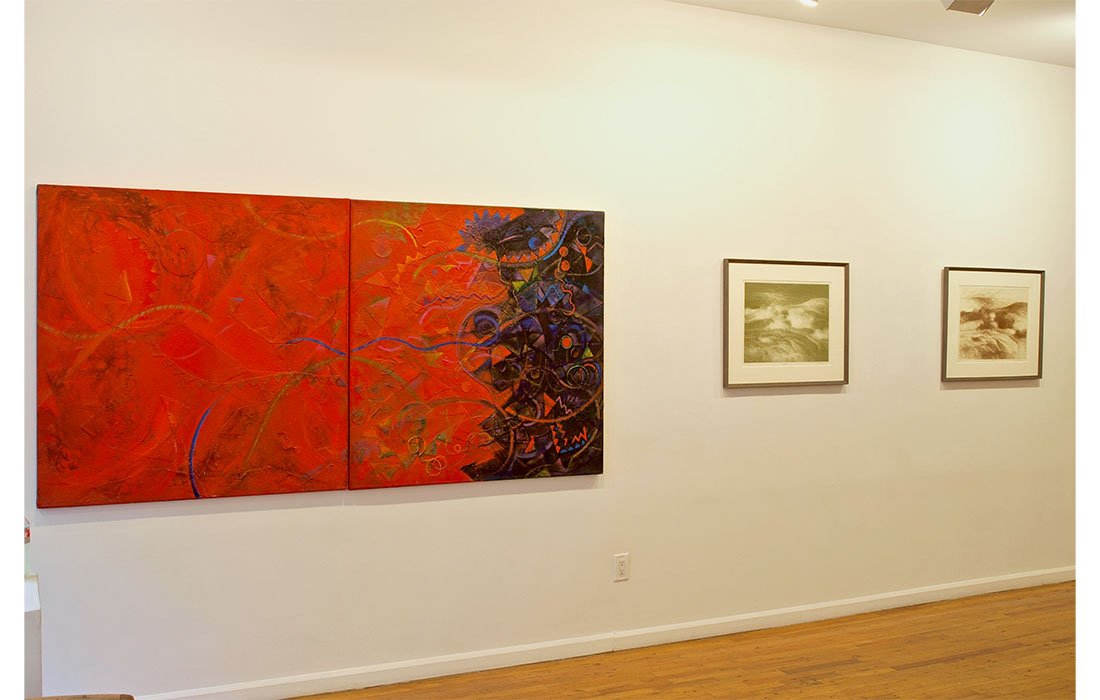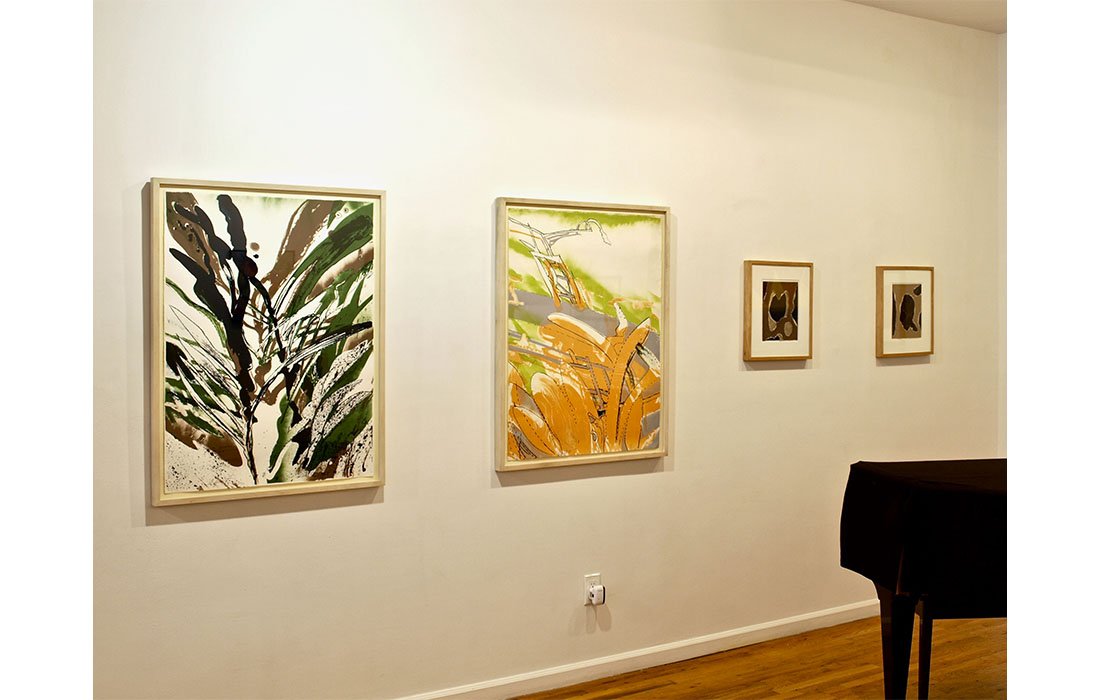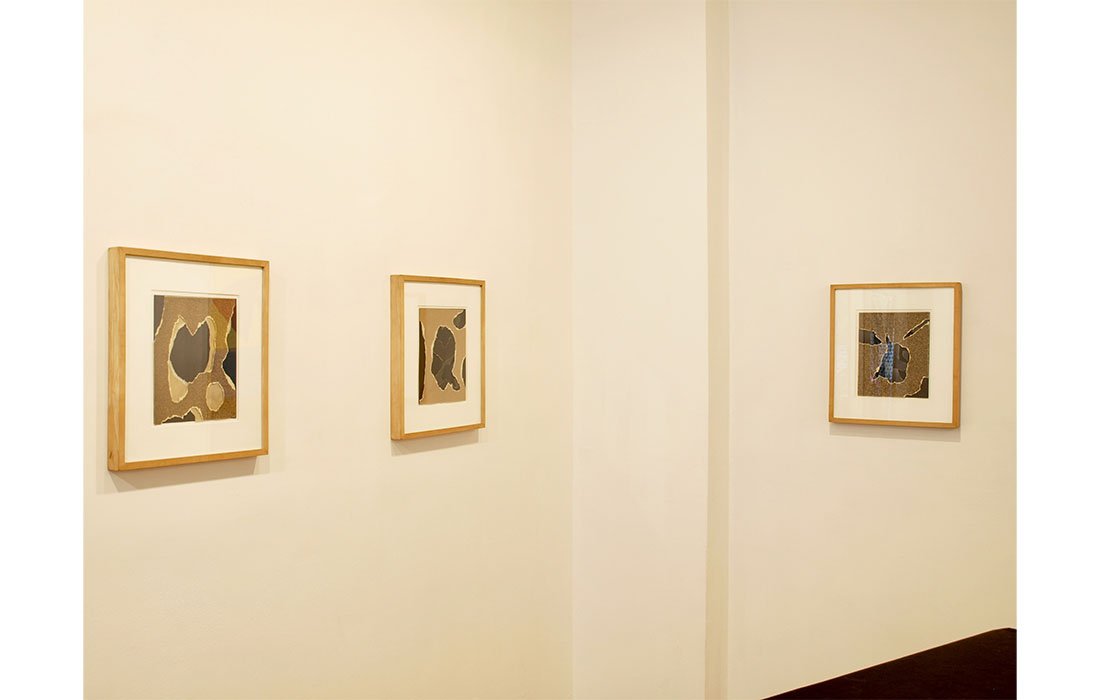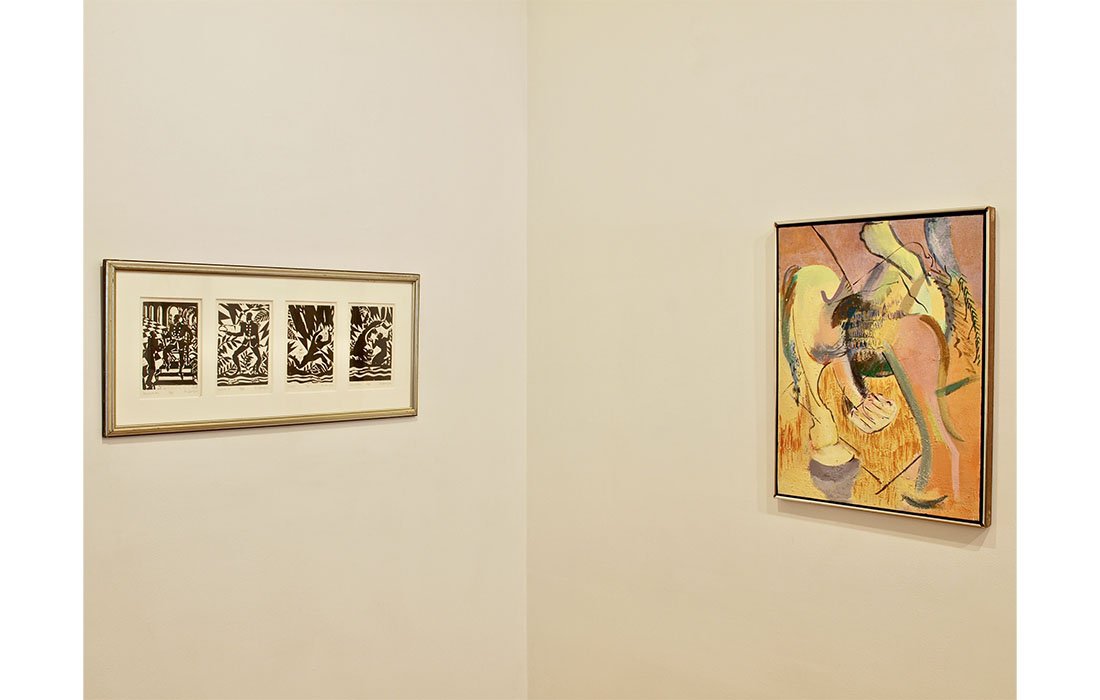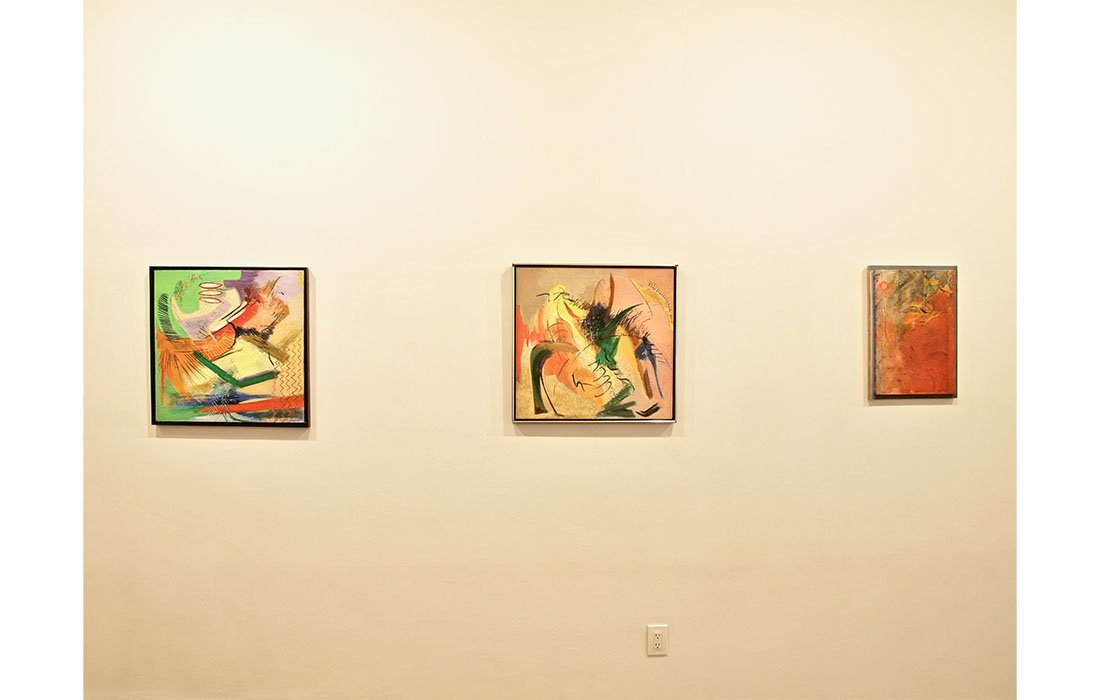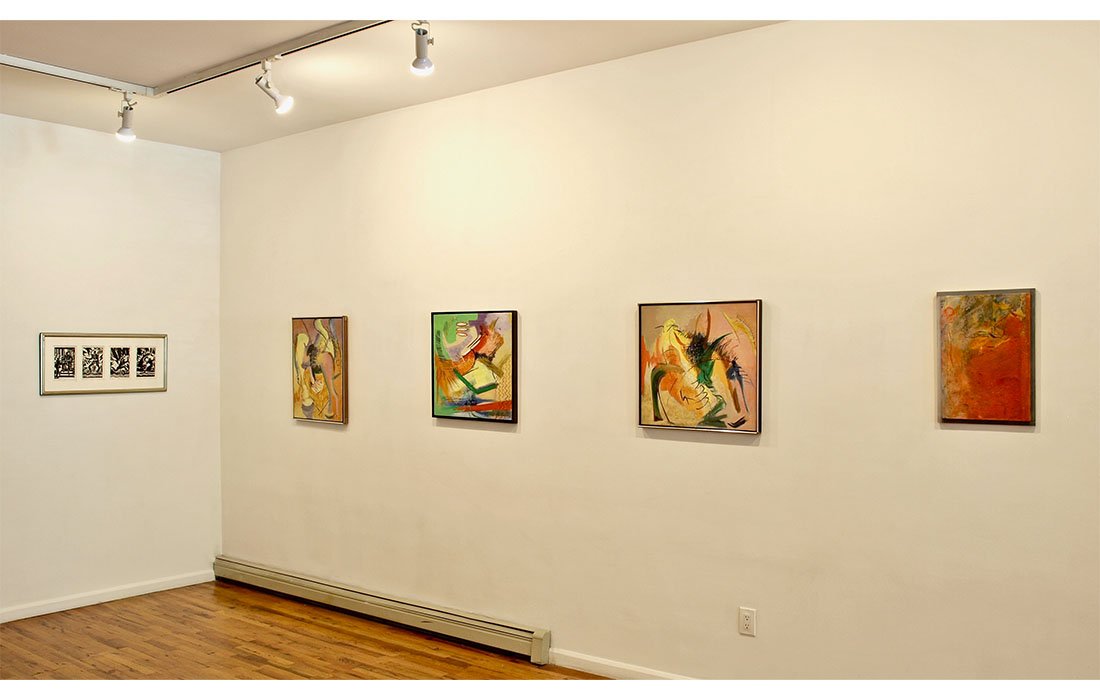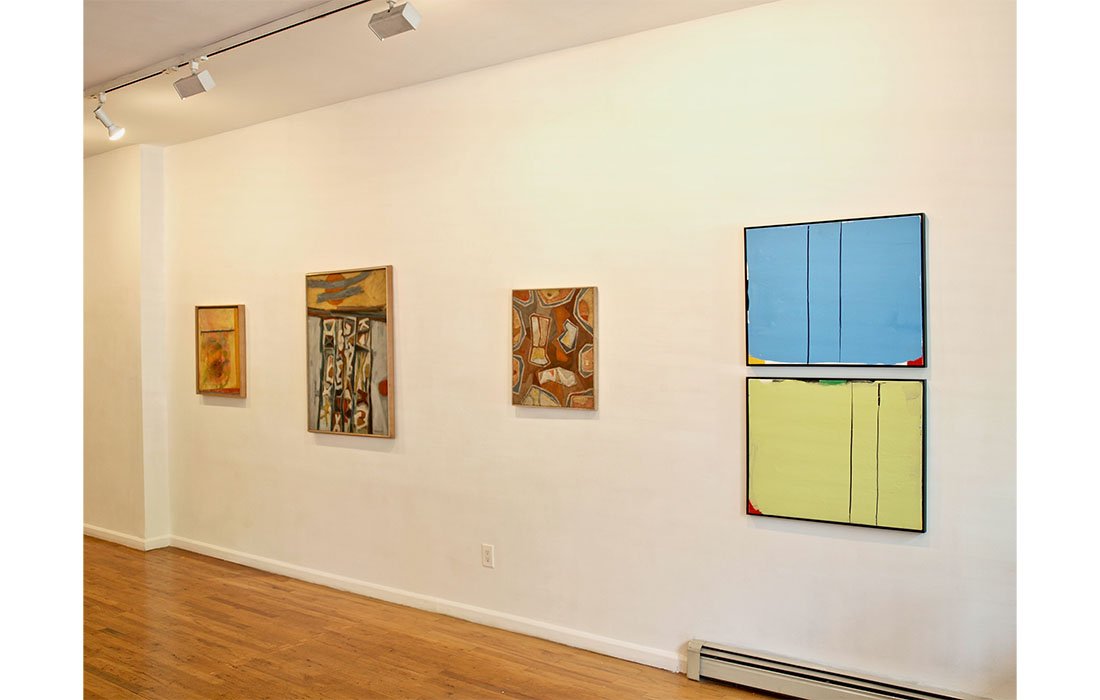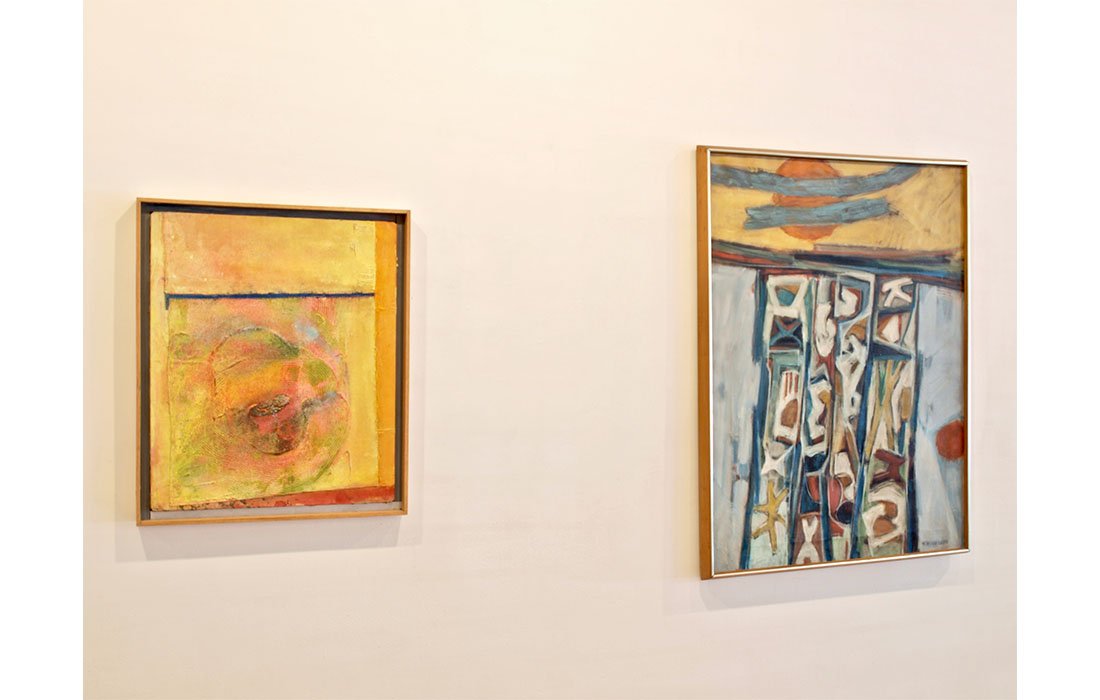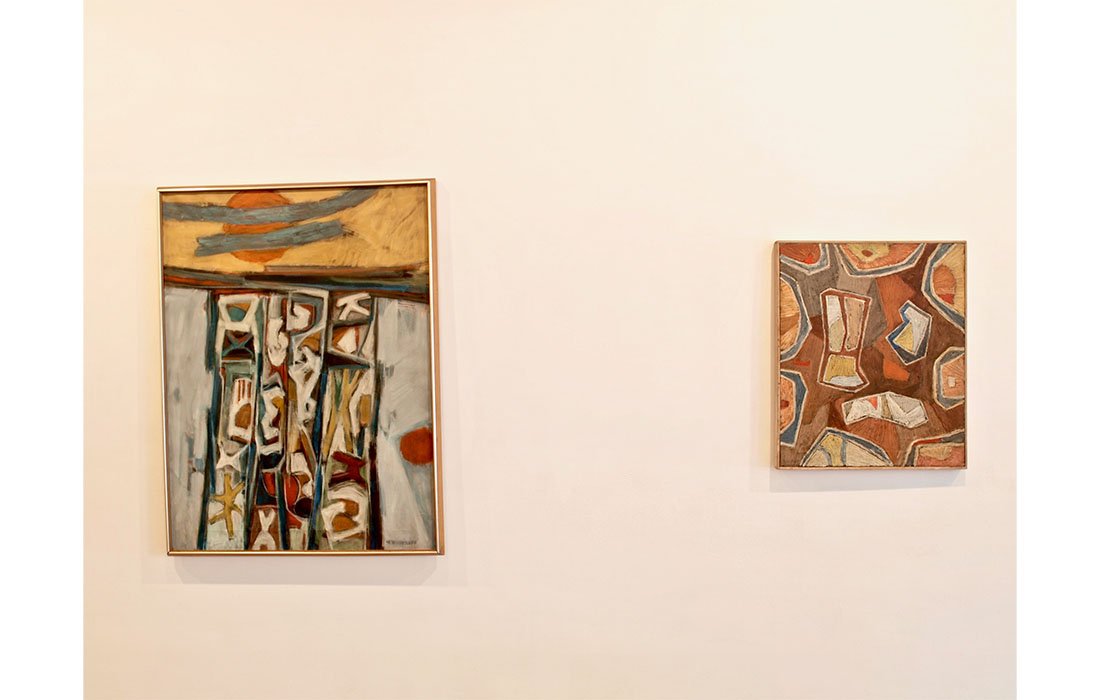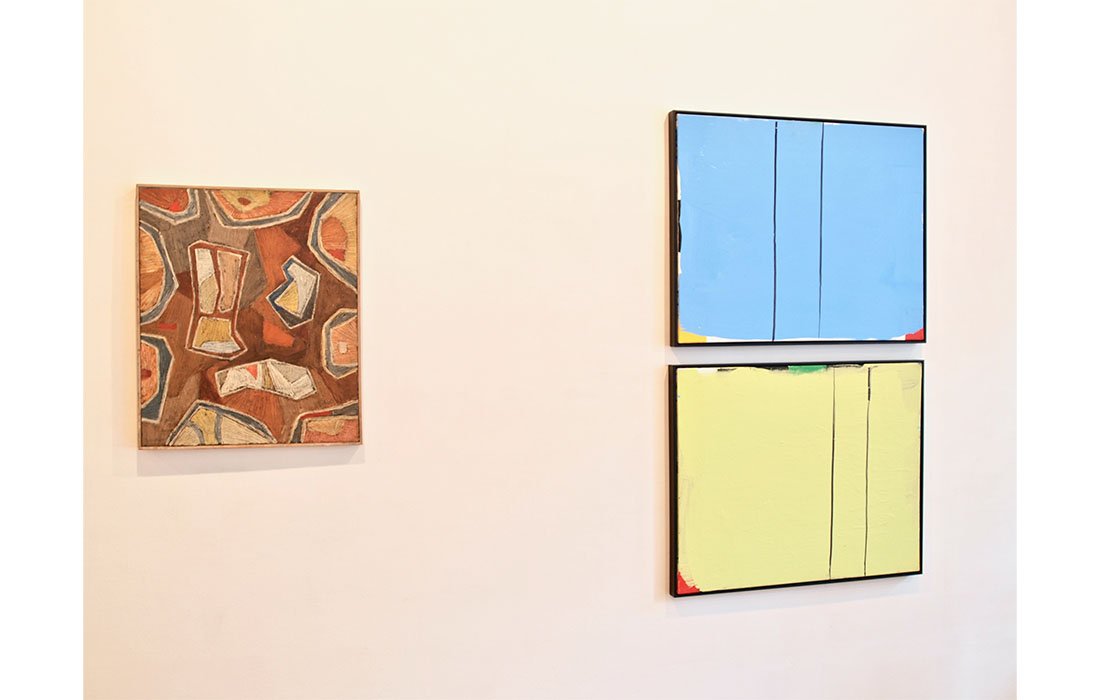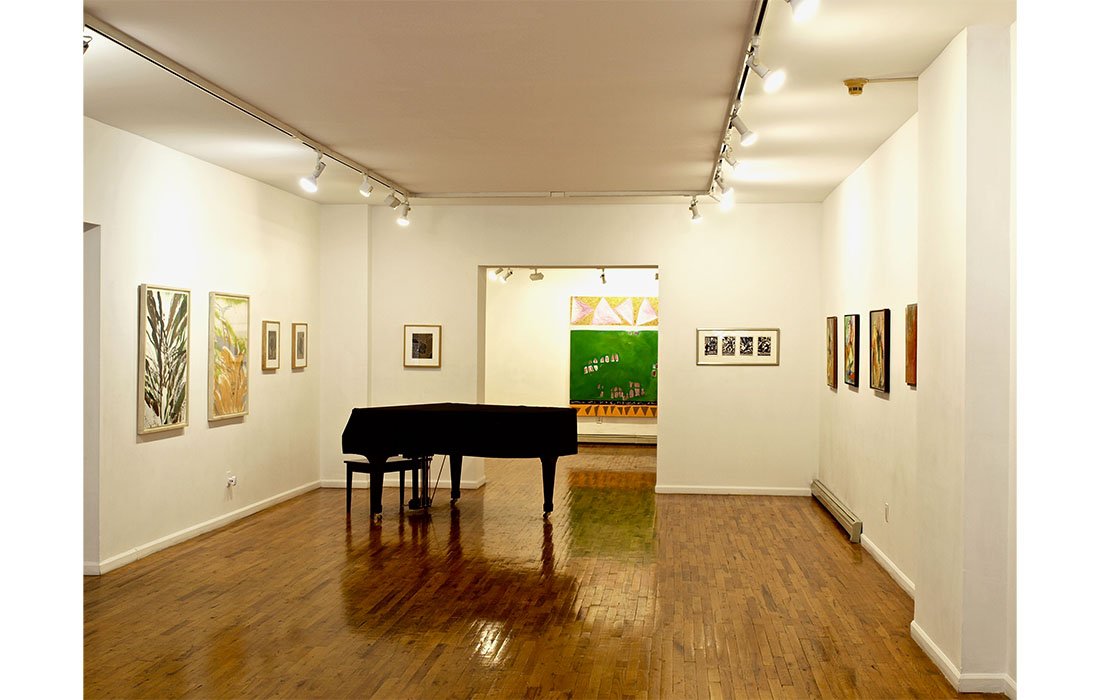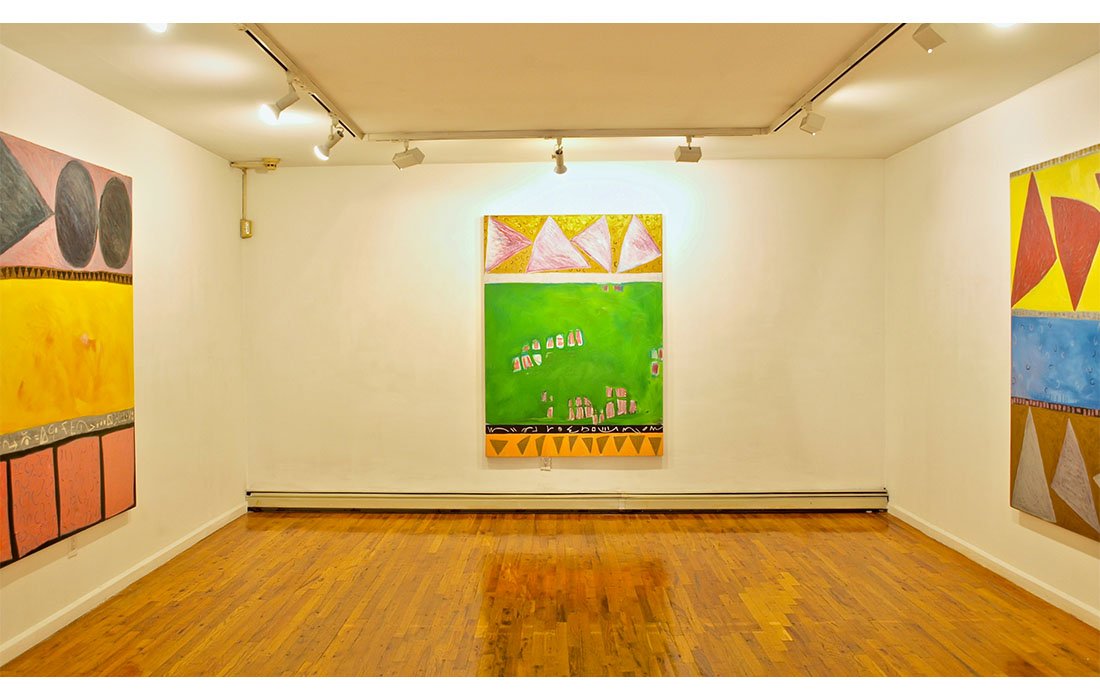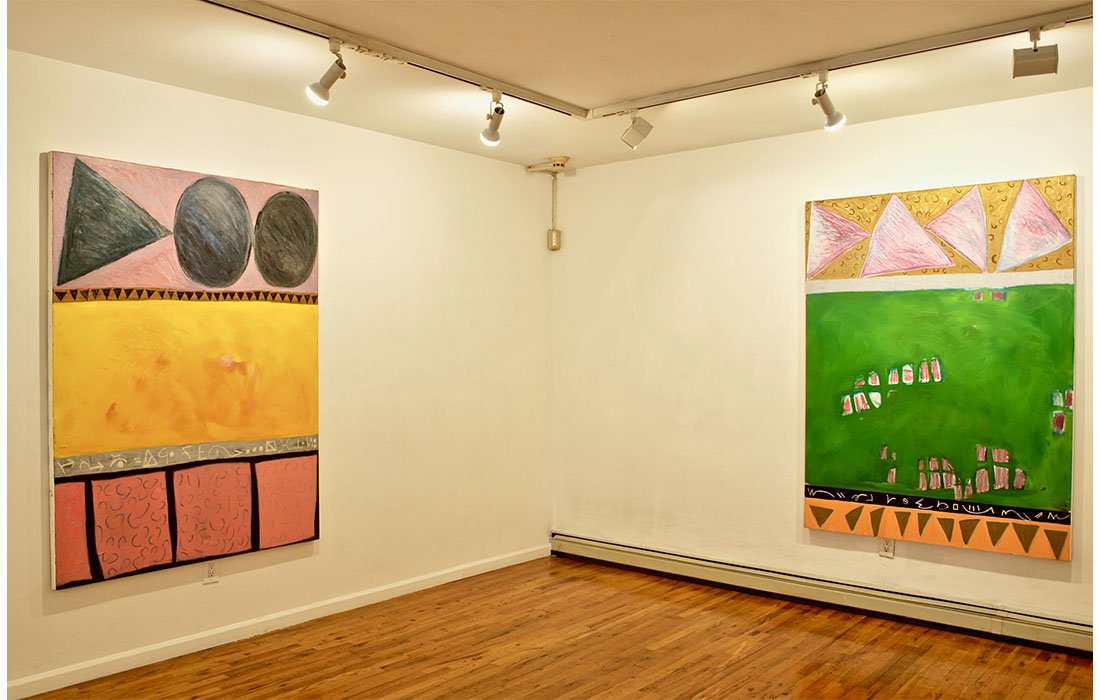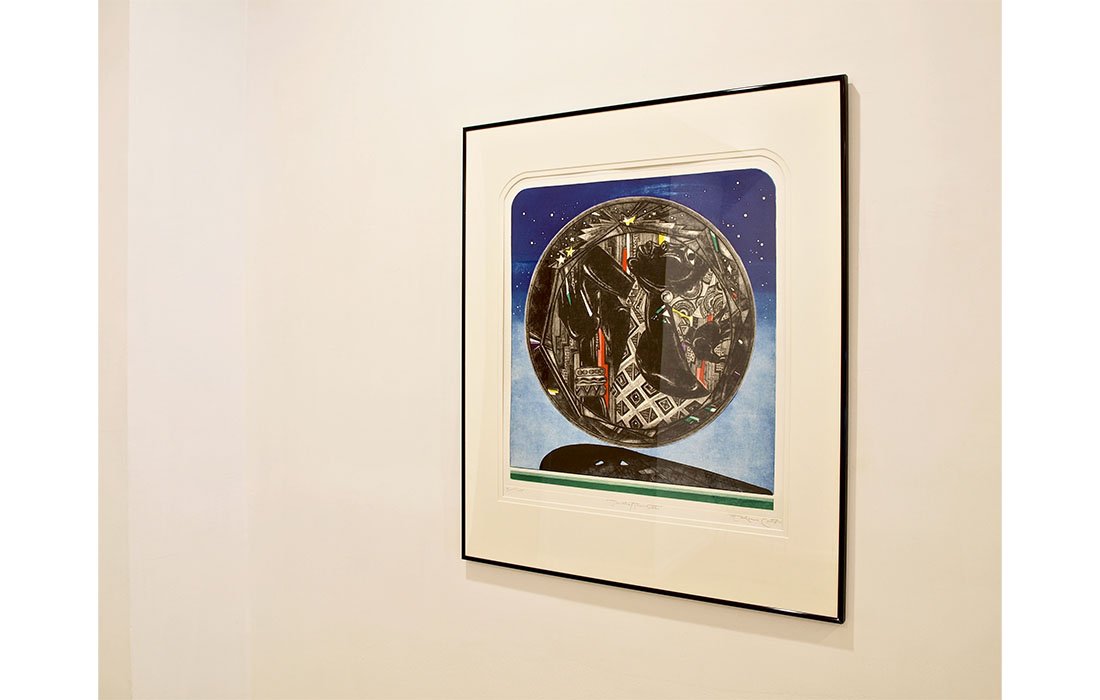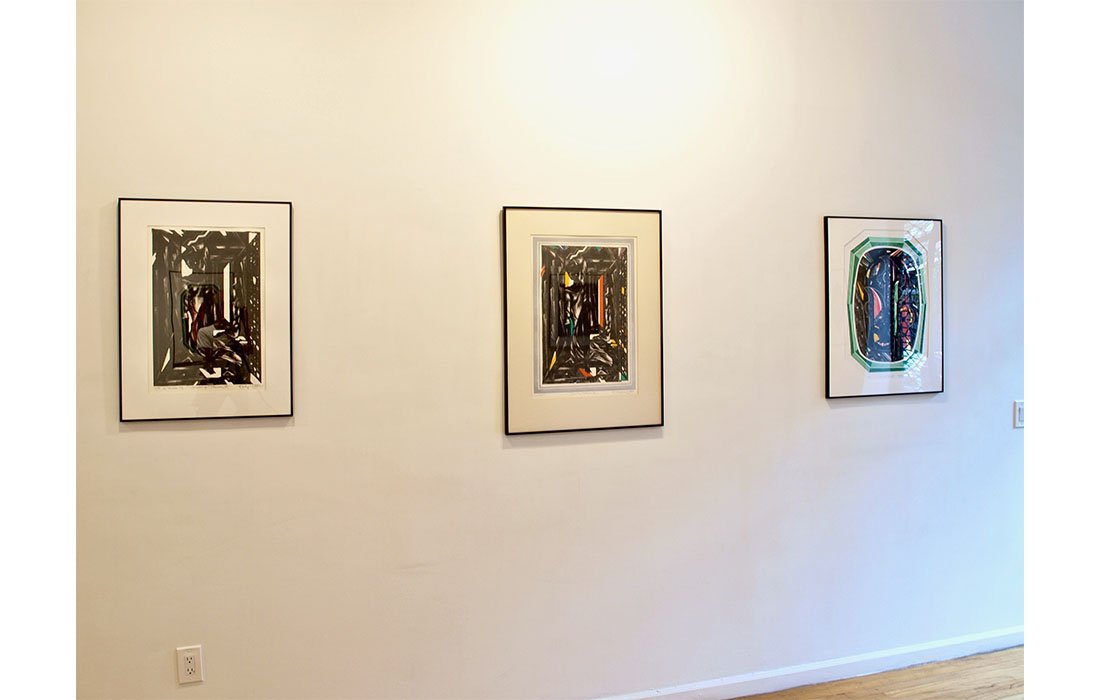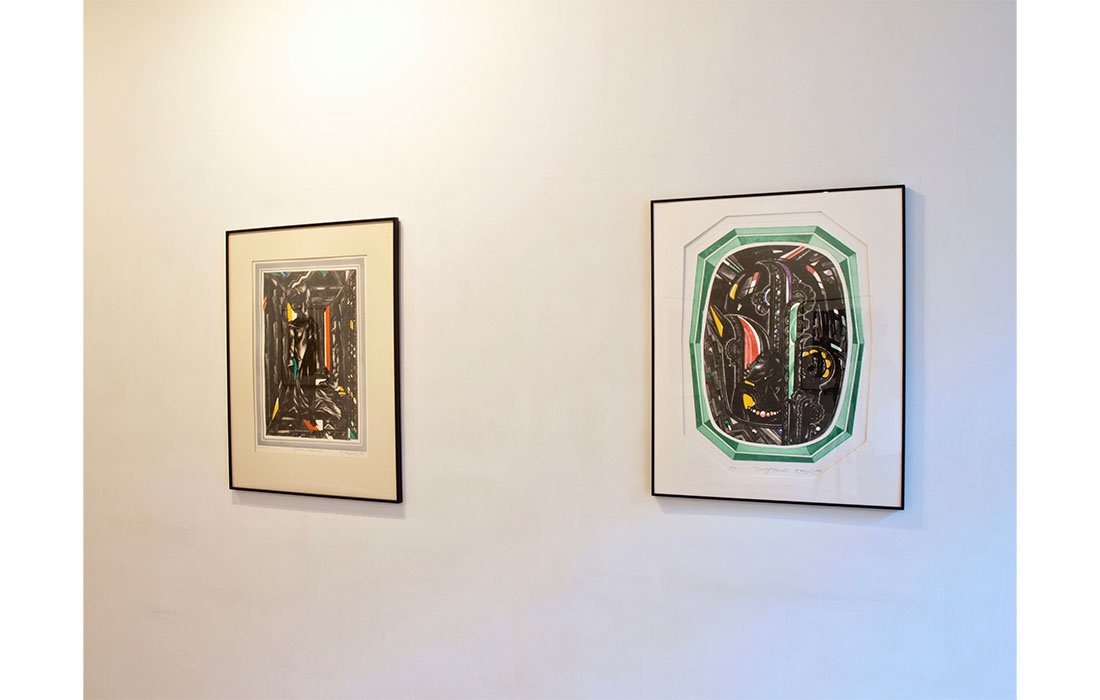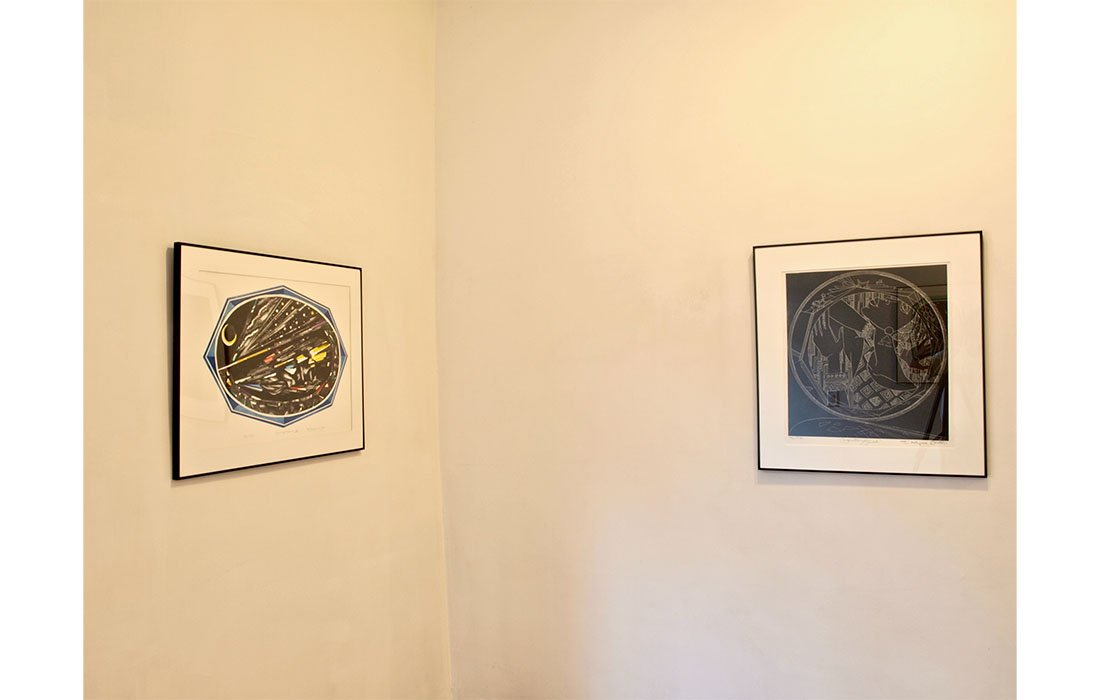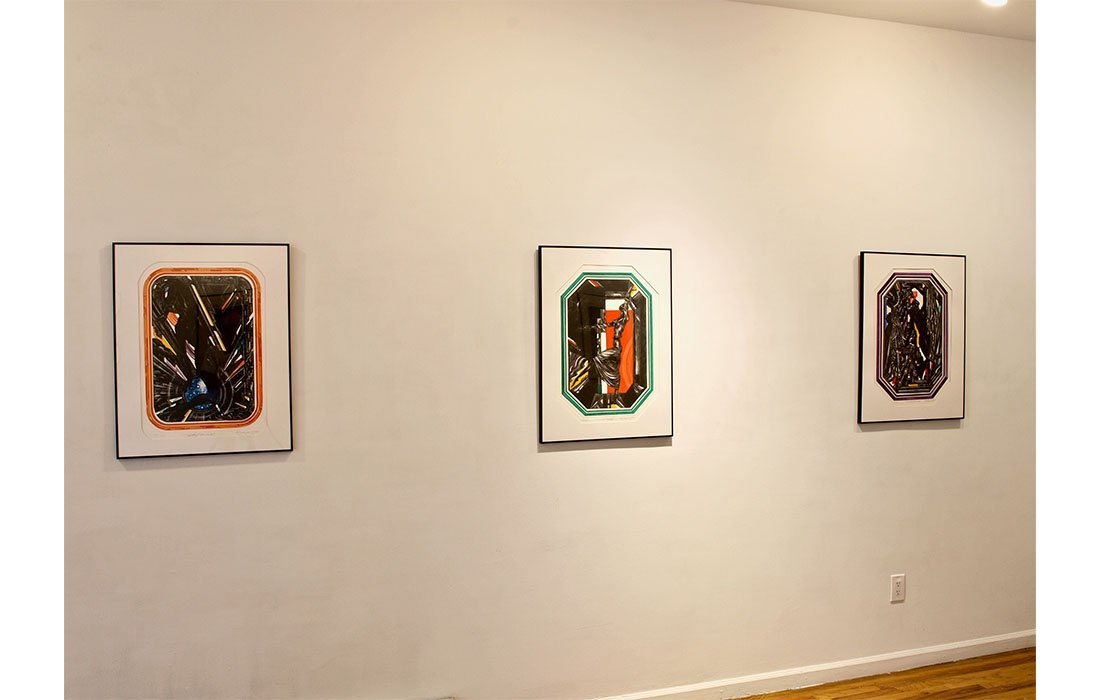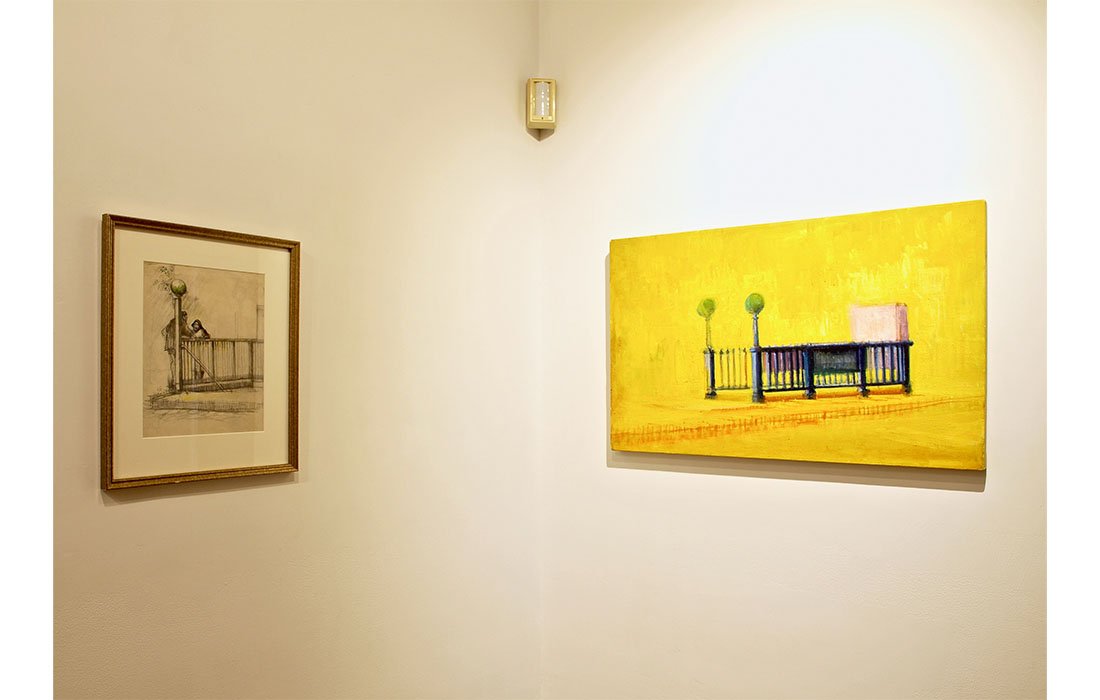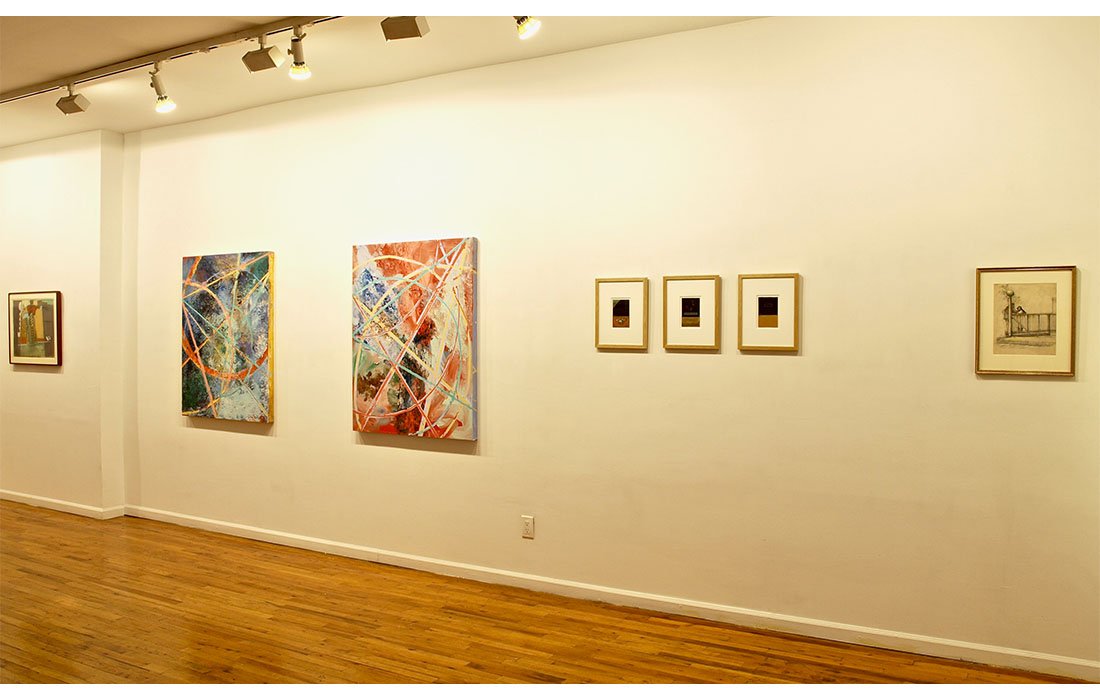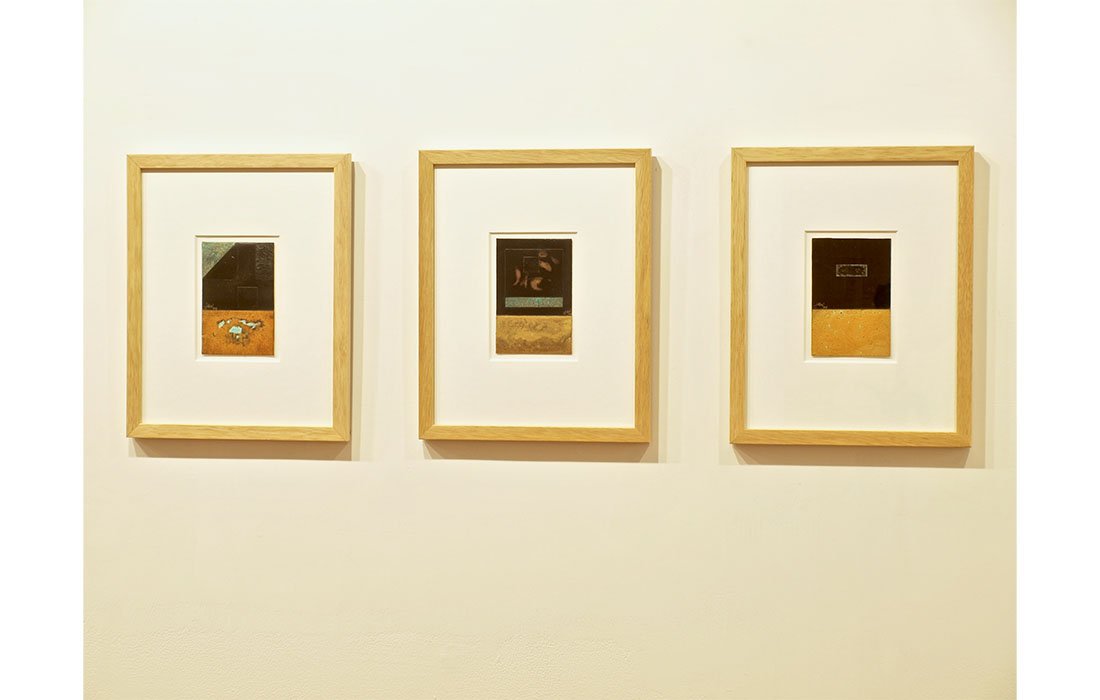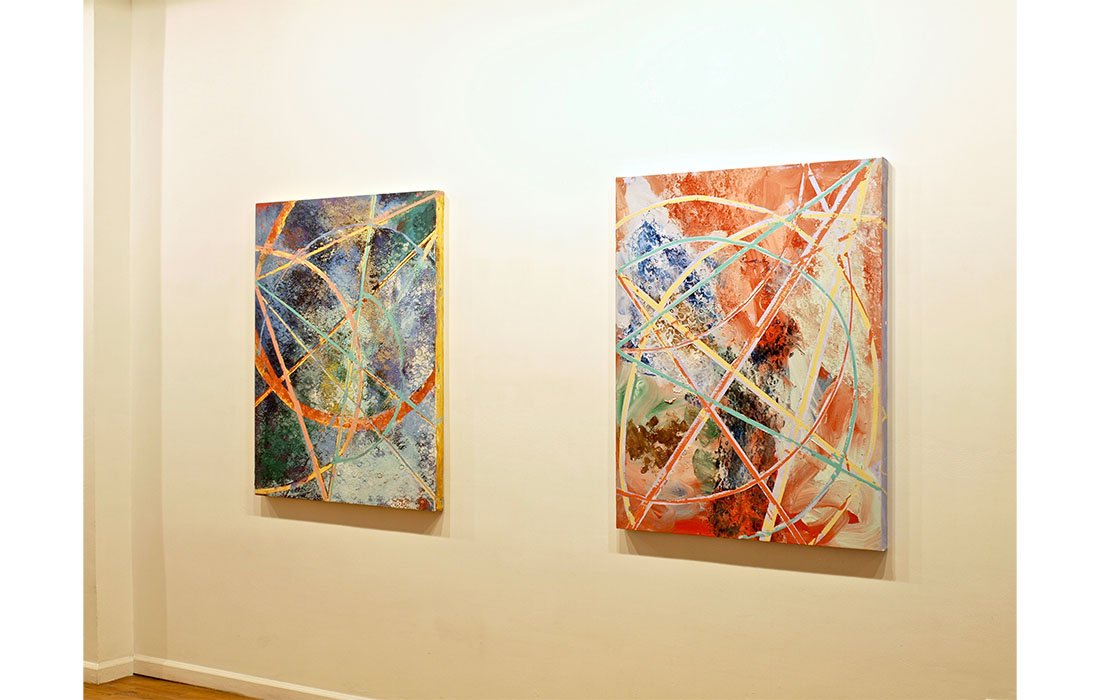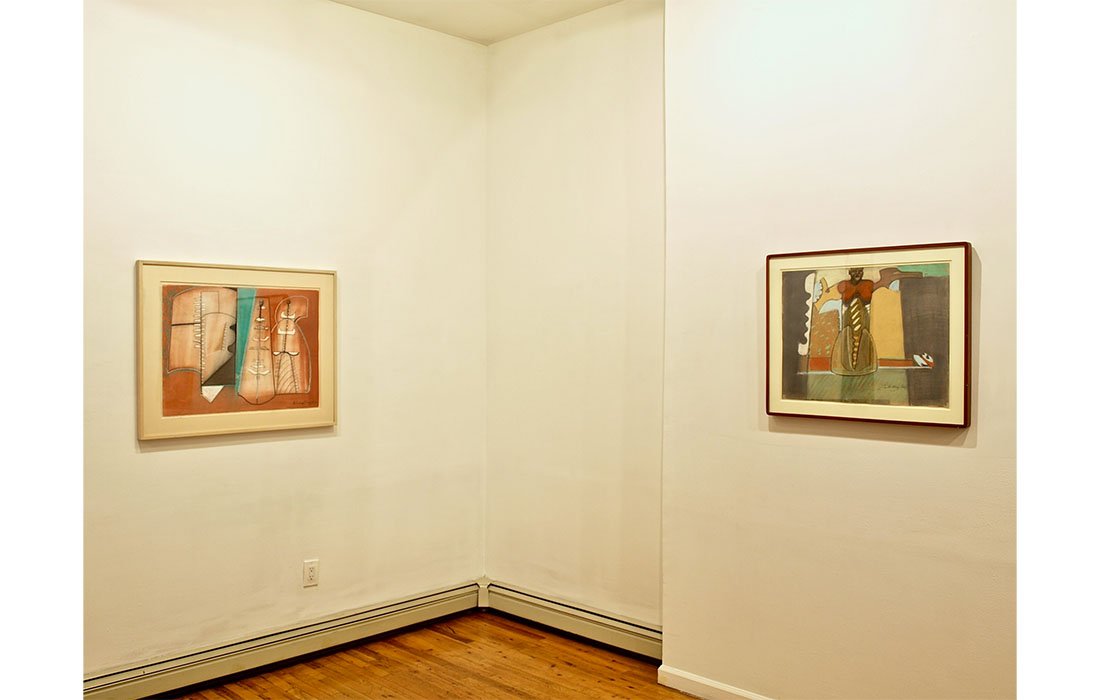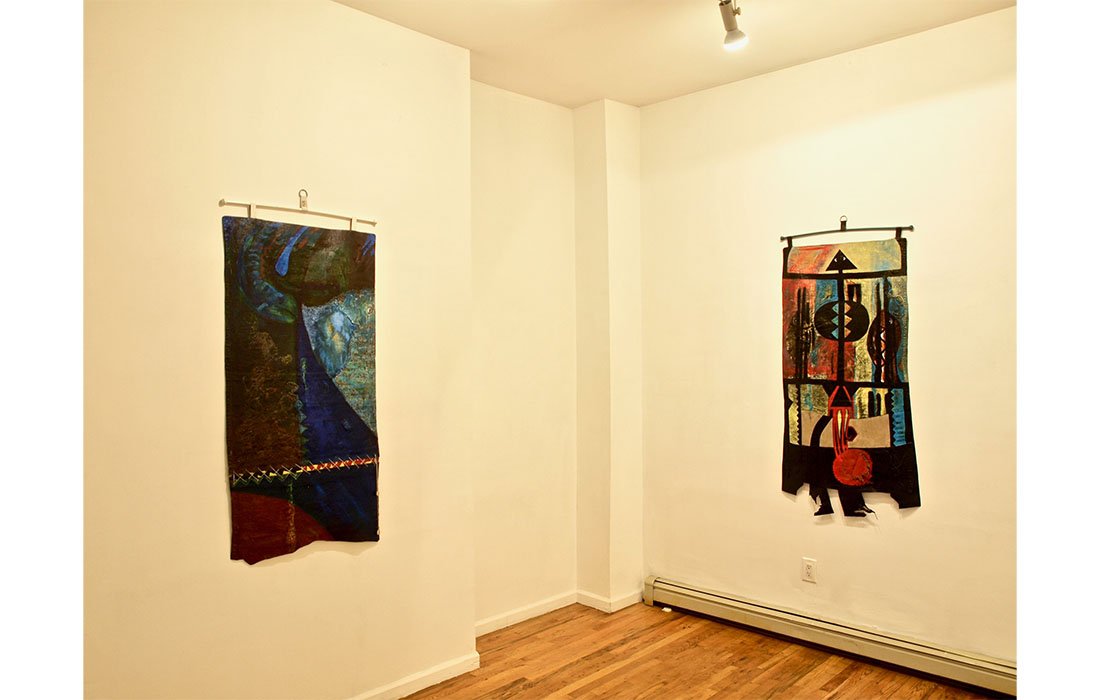Structures
STRUCTURES: SERIES AND PAIRS
August 3 to September 3, 2022
Installation Photography : Christian Carone
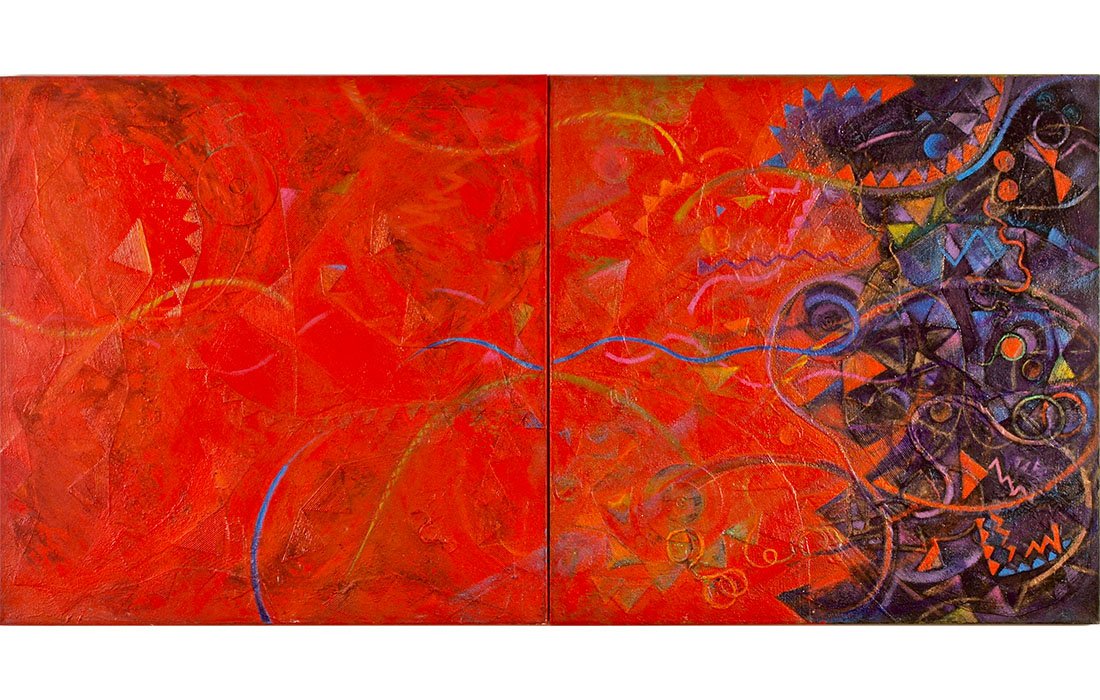
Charlotte Ka
Drumbeat 1 and Drumbeat 2, 1998
Mixed Media on canvas (Diptych)
48 x 96 inches | 48 x 48 inches each
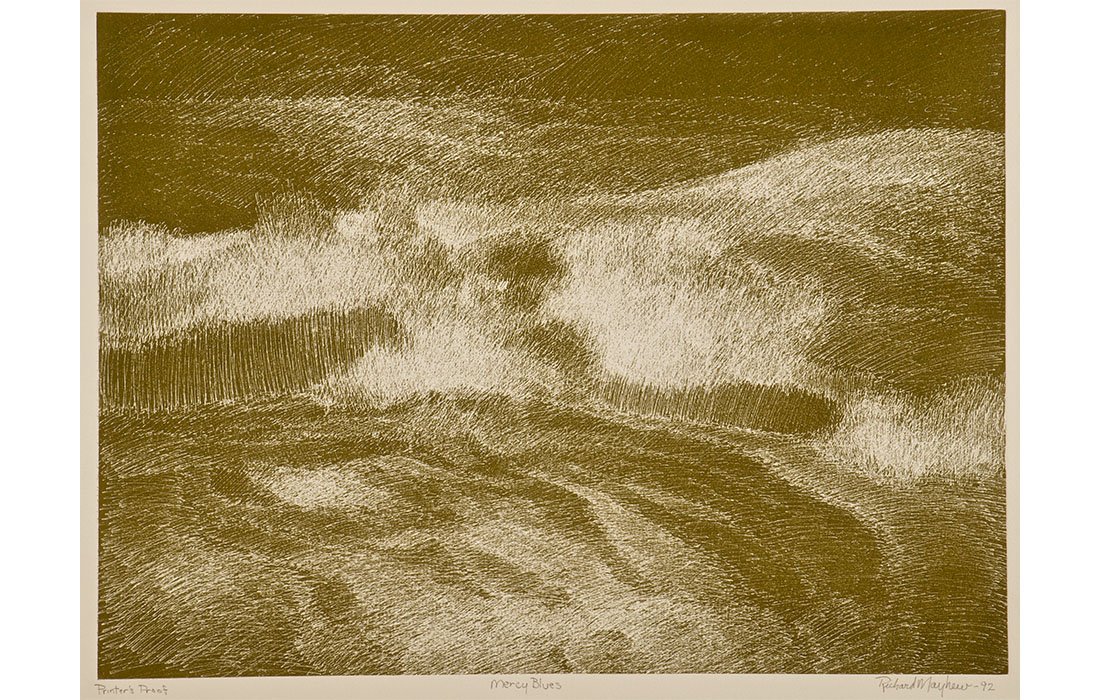
Richard Mayhew
Mercy Blues, ca. 1990
Etching (Printers Proof)
15.75 x 21.75 inches | Frame: 25.25 x 31.25 inches
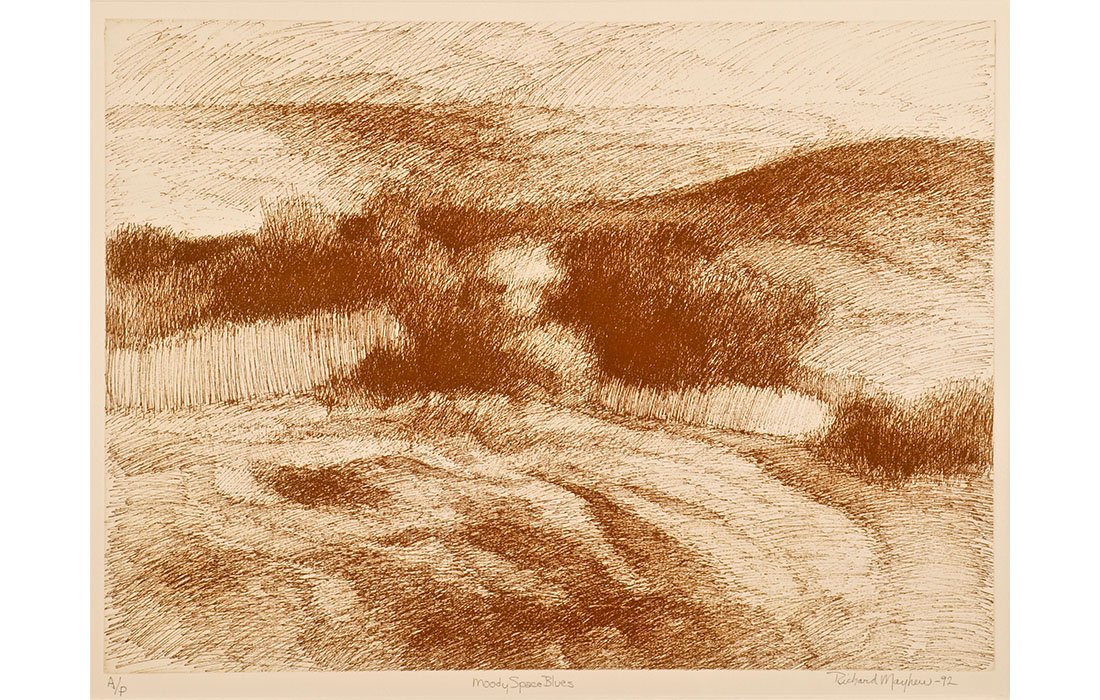
Richard Mayhew
Moody Space Blues, 1975
Etching (A / P)
15.75 x 21.75 inches| Frame: 25 3/8 x 31.12 inches
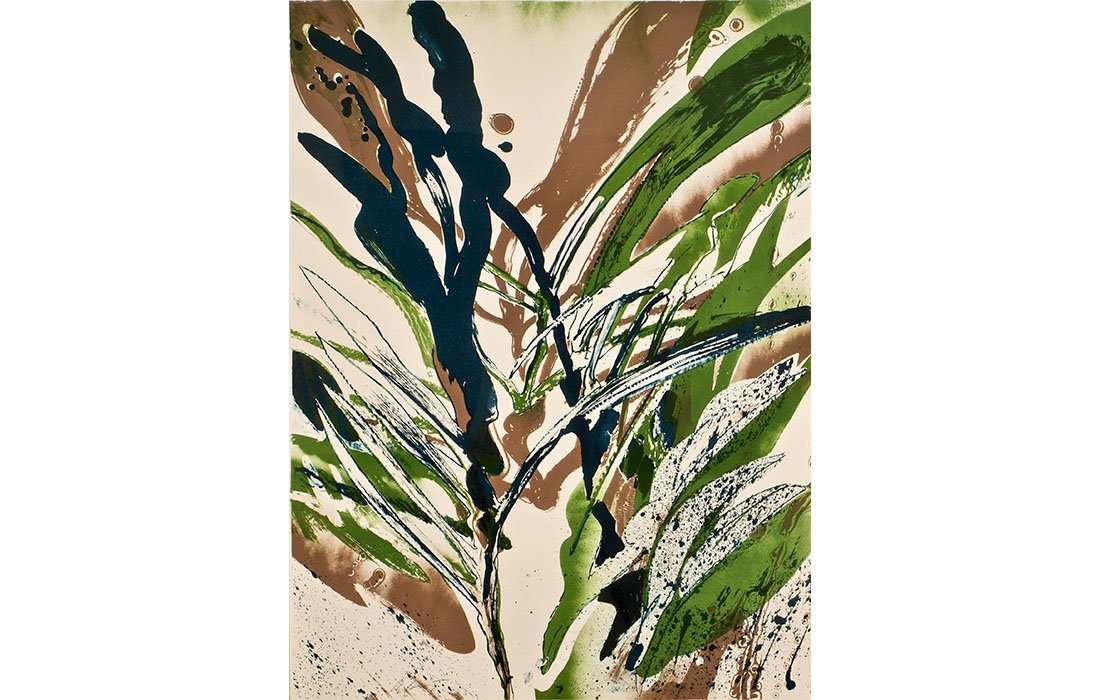
Richard Hunt
Forrestian, 1986
Lithograph (46 / 75)
40 x 30 inches | Frame: 43.75 x 33.5 inches
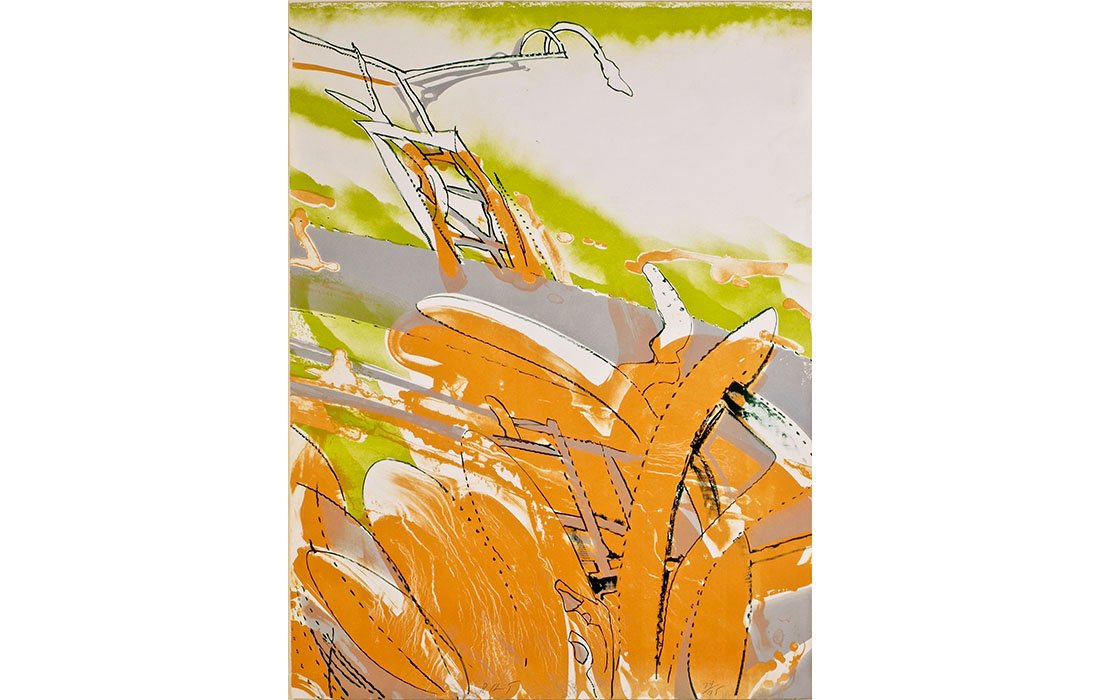
Richard Hunt
Jumping Off Place, 1986
Lithograph (74 / 75)
40 x 30 inches | Frame: 43.75 x 33.5 inches
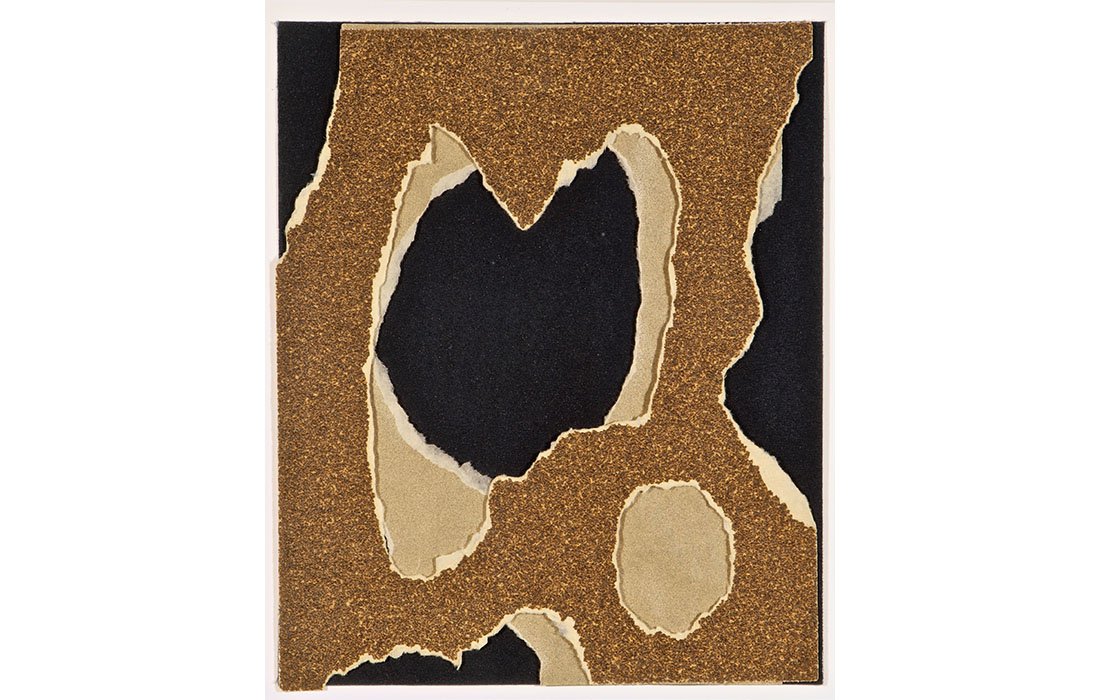
Tom Kendall
Sandpaper Autumn # 19, 1991
Collage with Sandpaper
11 x 9 inches | Frame: 18.5 x 16.5 inches
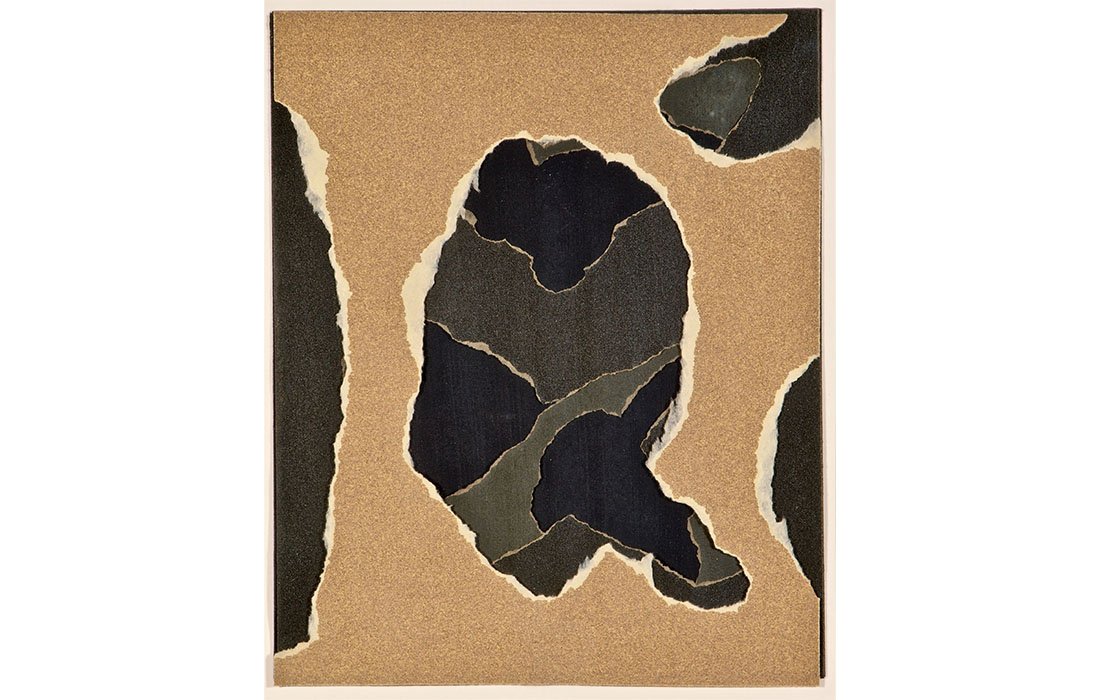
Tom Kendall
Sandpaper Figures # 23, 1991
Collage with Sandpaper
11 x 9 inches | Frame: 18.5 x 16.5 inches
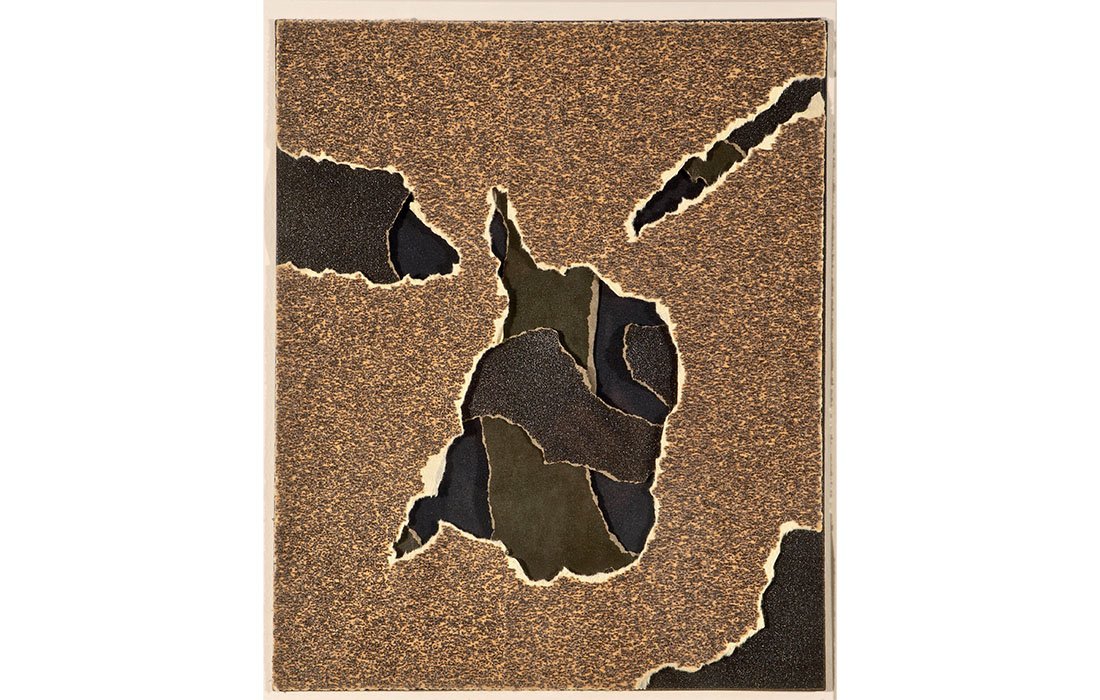
Tom Kendall
Sandpaper Moonlight # 20, 1991
Collage with Sandpaper
11 x 9 inches | Frame: 18.5 x 16.5 inches
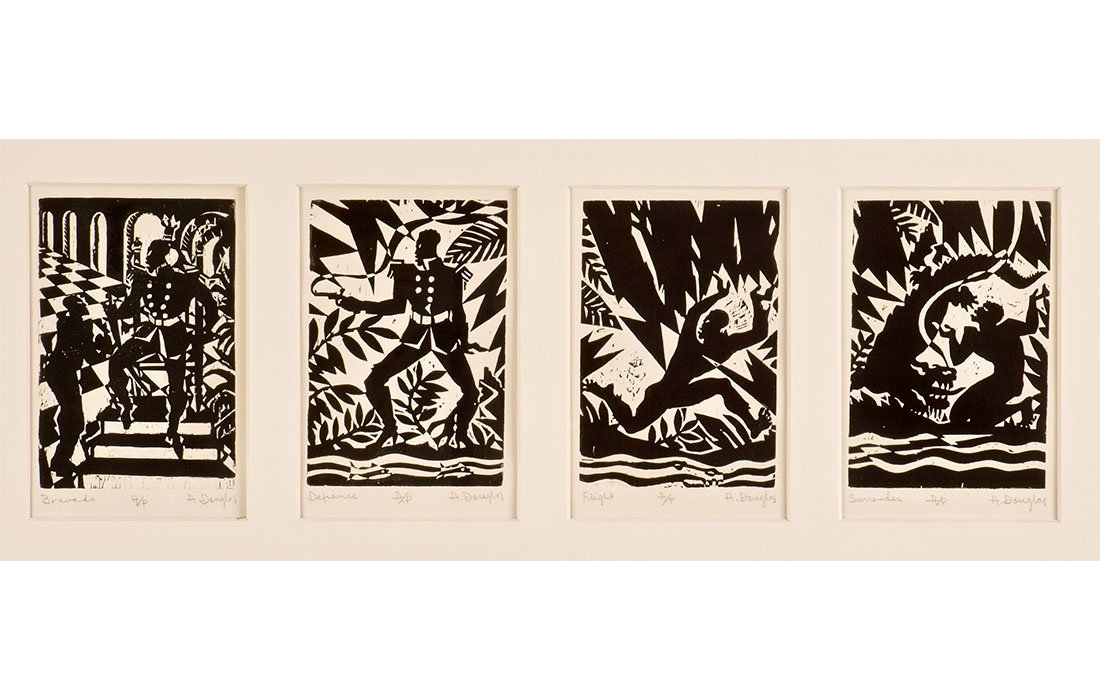
Aaron Douglas
Emperor Jones
Bravado, Defiance, Flight, Surrender, 1926
Woodcut (A / P), Printed 1972
15 7/8 x 35 inches
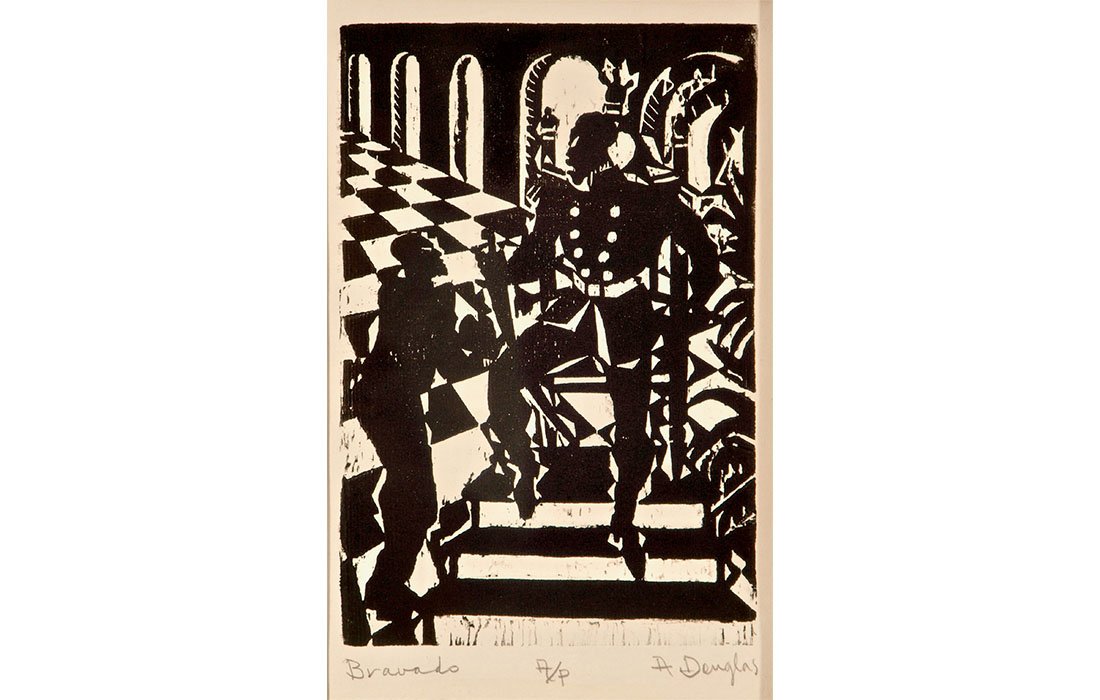
Aaron Douglas
Emperor Jones: Bravado, 1972
Woodcut (A / P)
7 7/8 x 5 3/8 inches each
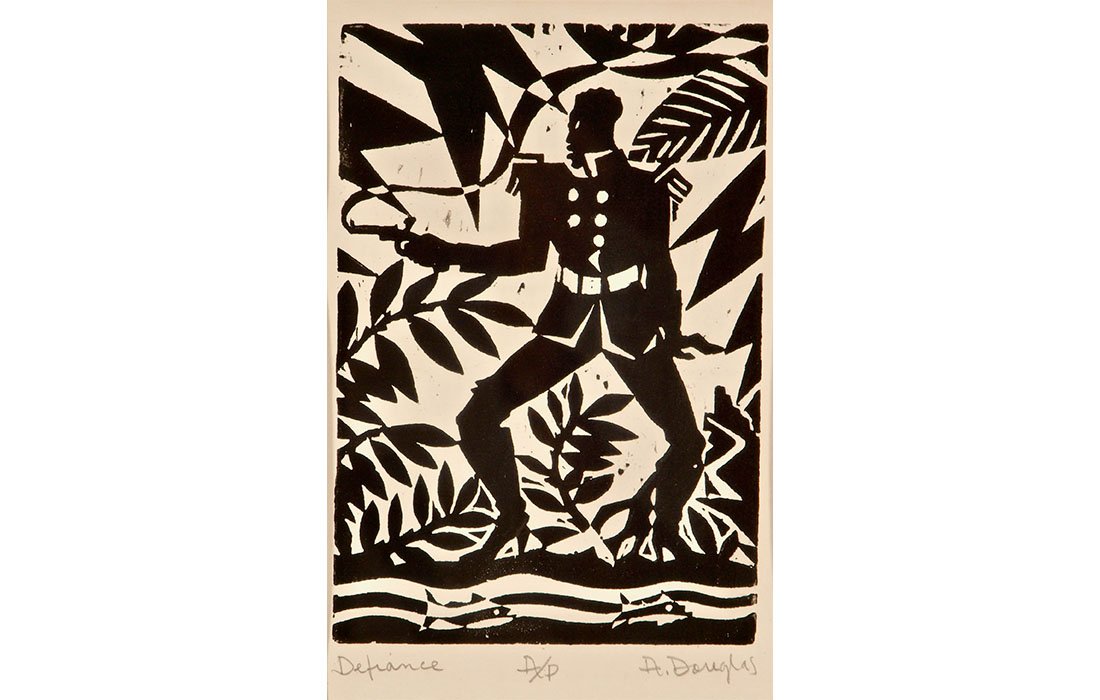
Aaron Douglas
Emperor Jones: Defiance, 1972
Woodcut (A / P)
7 7/8 x 5 3/8 inches
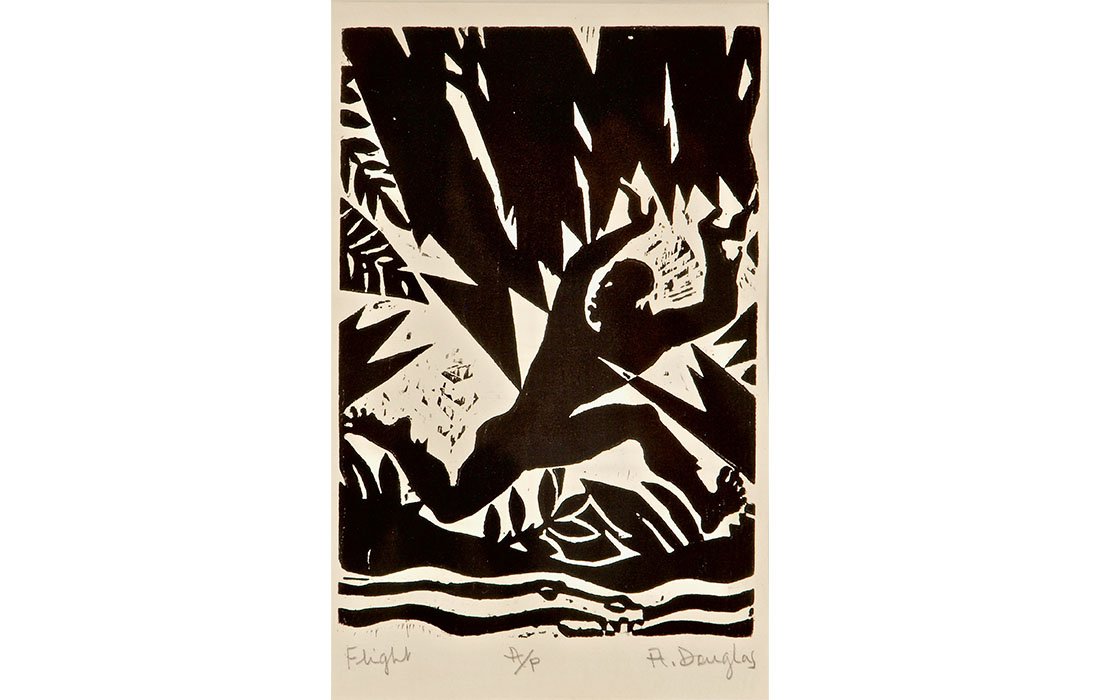
Aaron Douglas
Emperor Jones: Flight, 1972
Woodcut (A / P)
7 7/8 x 5 3/8 inches
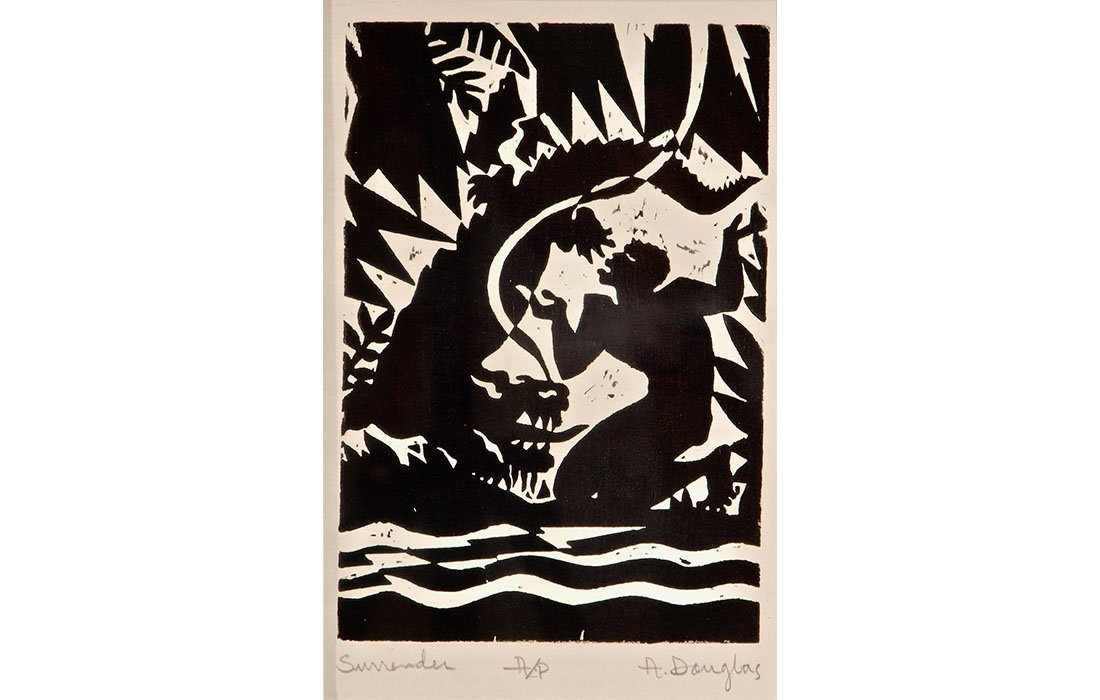
Aaron Douglas
Emperor Jones: Surrender, 1972
Woodcut (A / P)
7 7/8 x 5 3/8 inches
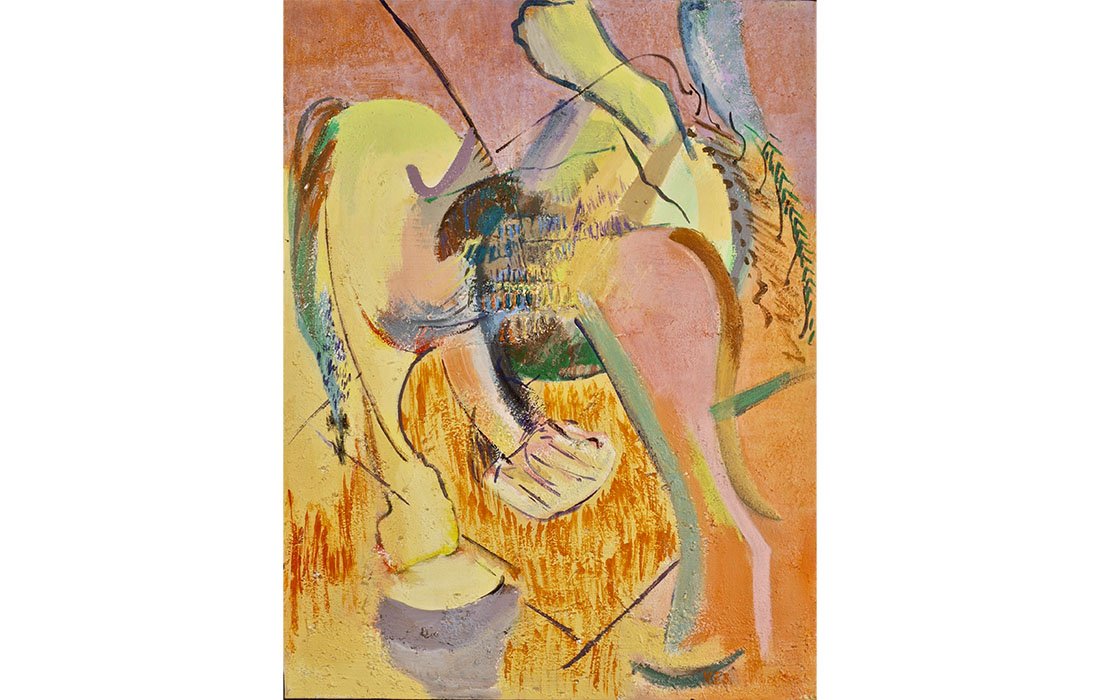
Vivian Browne
The Chief’s Attendant, 1973
Acrylic on canvas
26 1/8 x 20 inches | Frame: 27.25 x 21 inches

Vivian Browne
Yoruba Sisters, ca. 1975
Oil on canvas
23.25 x 23.5 inches | Frame: 24.25 x 24 3/8 inches
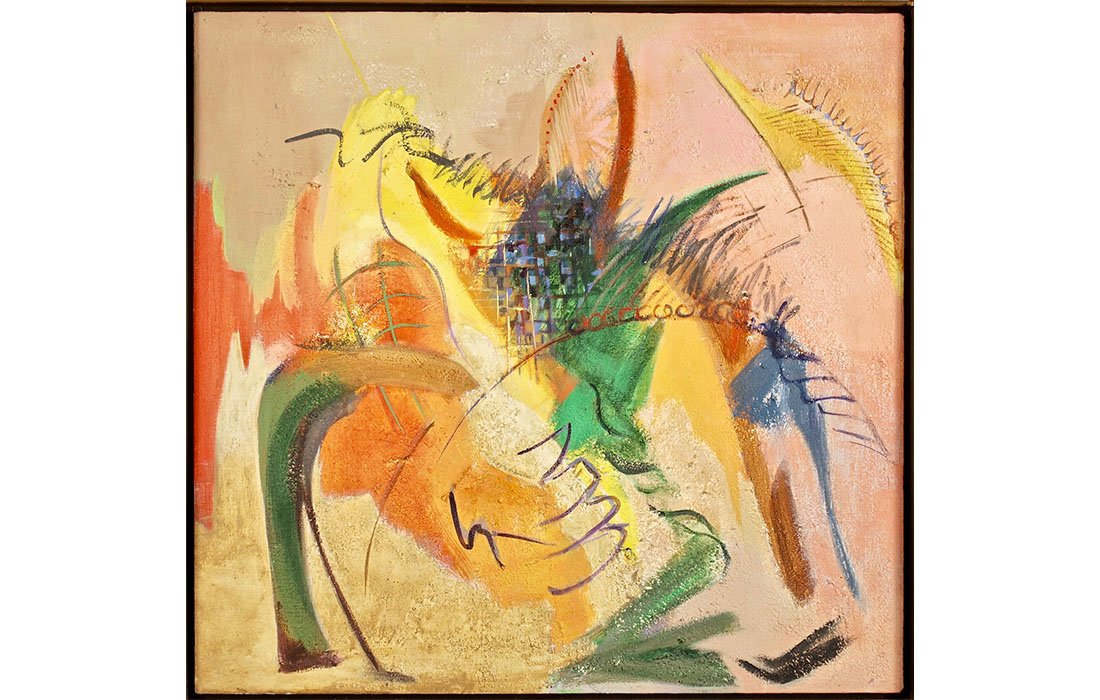
Vivian Browne
Echoes of Benin City, ca. 1975
Acrylic on canvas
23 x 24 inches | Frame: 24 1/8 x 25 1/8 inches
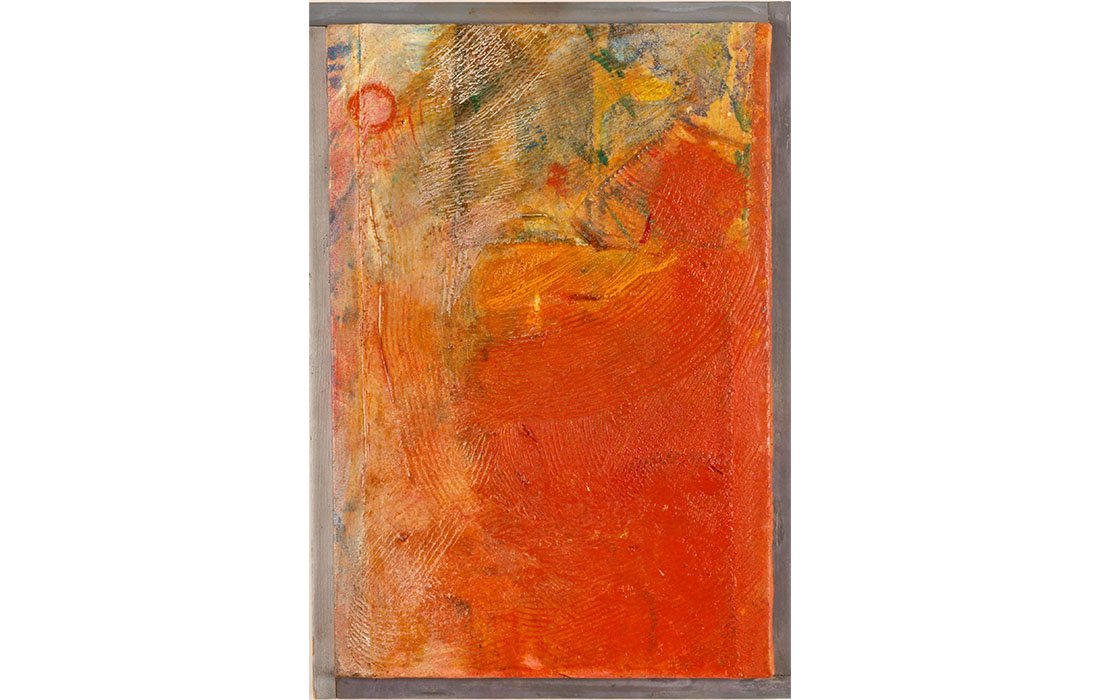
Frank Bowling
Top, 1995
Mixed Media
21 x 14 5/8 inches
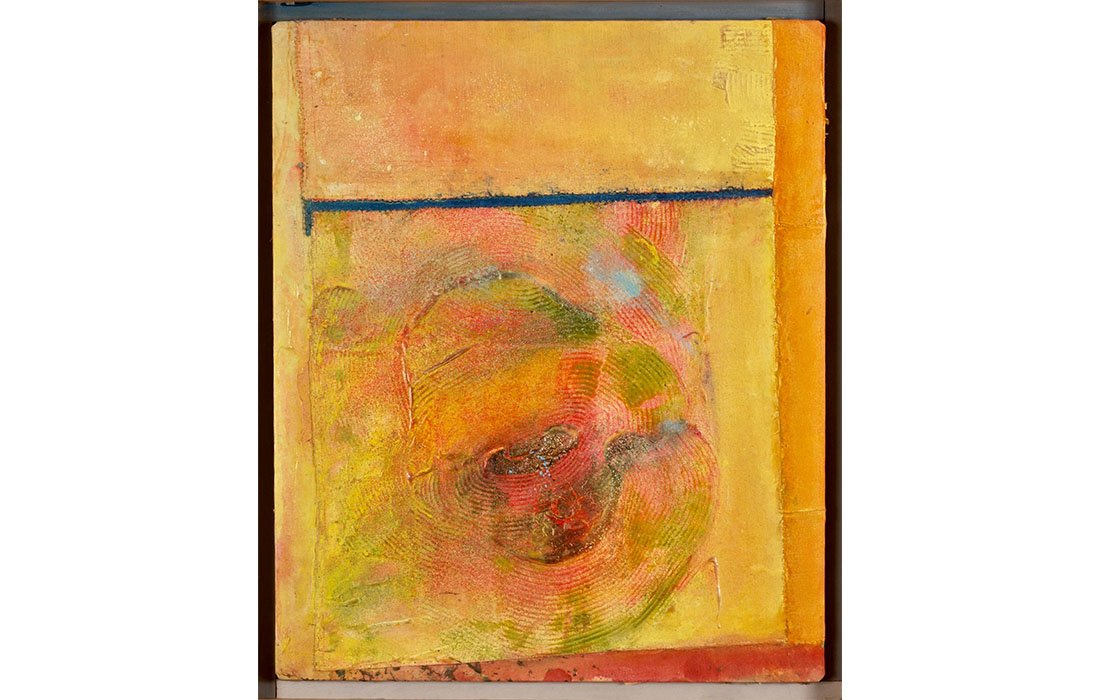
Frank Bowling
Blue Line Reflection # 12, 1996
Acrylic on canvas
25 1/8 x 21.5 inches | Frame: 26 1/8 x 22 1/8 inches
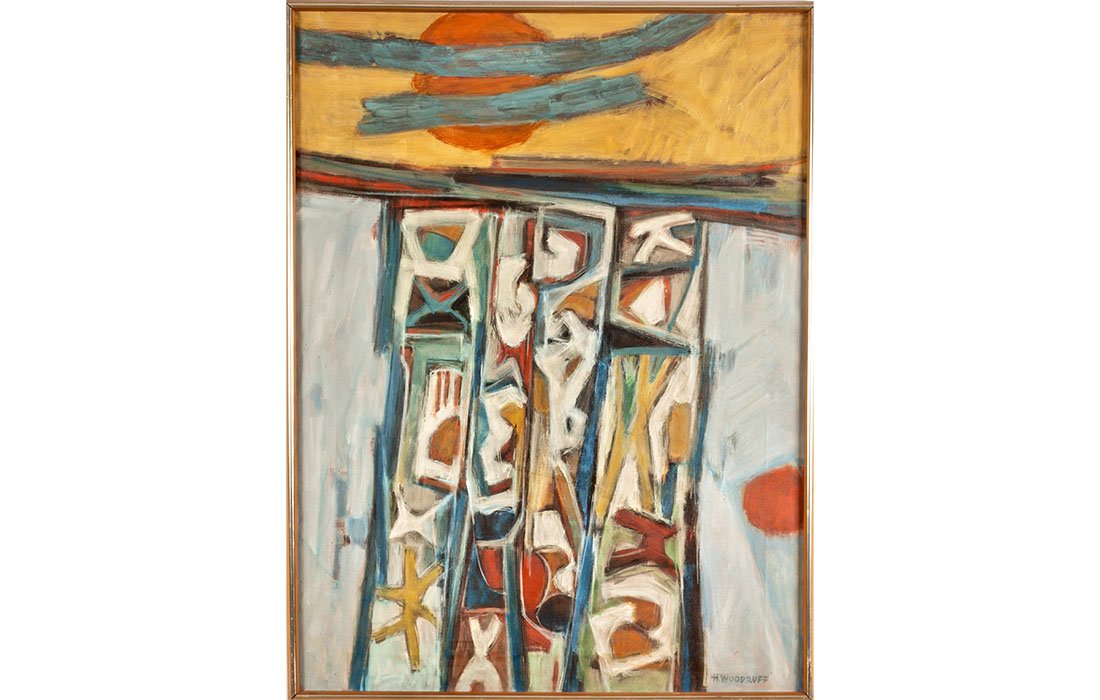
Hale Woodruff
Portal No.2, ND
Oil on canvas
40 x 30 inches | Frame: 41.5 x 31inches
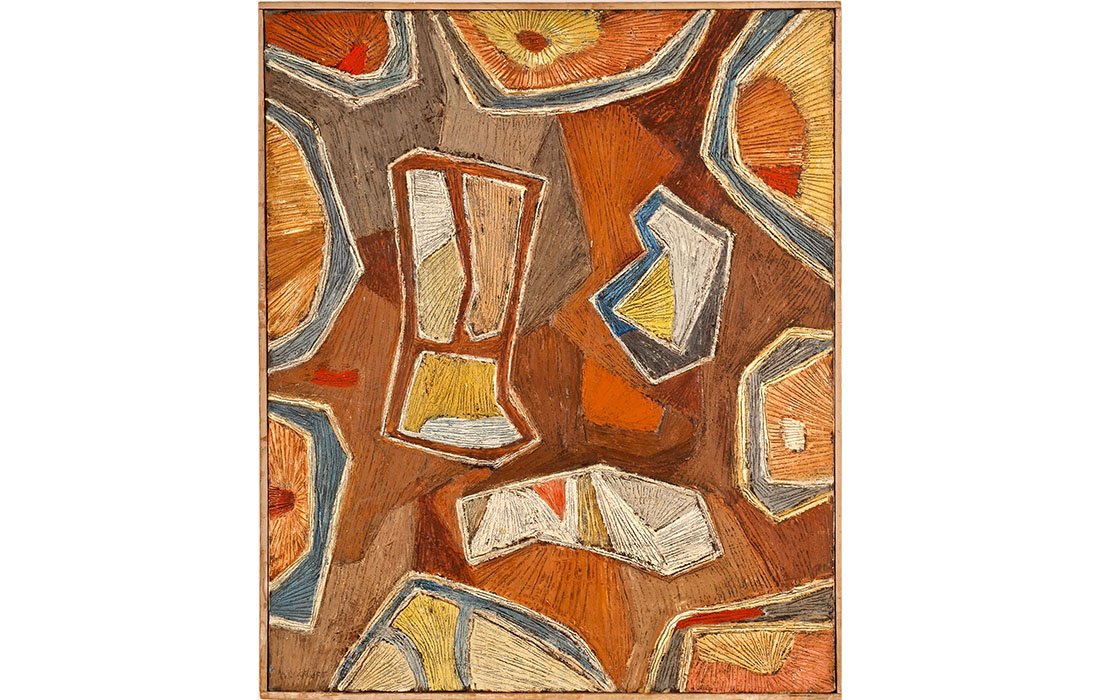
Hale Woodruff
Untitled, 1953
Oil on canvas
24 x 20 1/8 inches | Frame: 24.75 x 20.75 inches
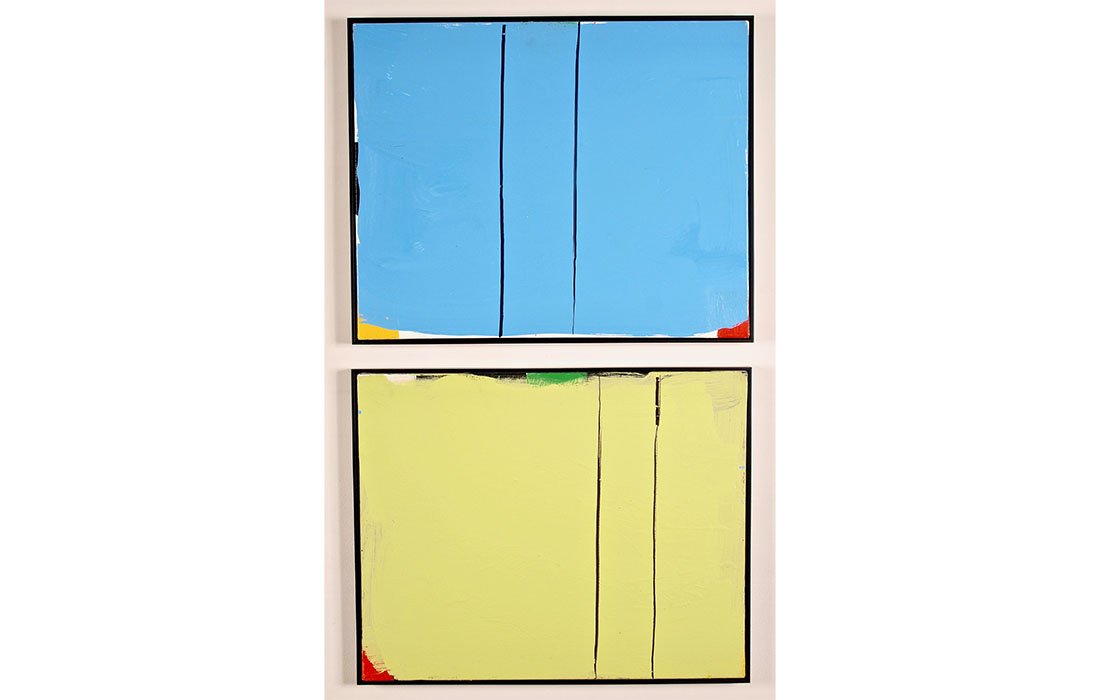
Gerald Jackson
Blue Green INC-1, 1989
Acrylic on canvas (Diptych)
24 x 30 inches | Frame: 24.75 x 30.7/8 inches each
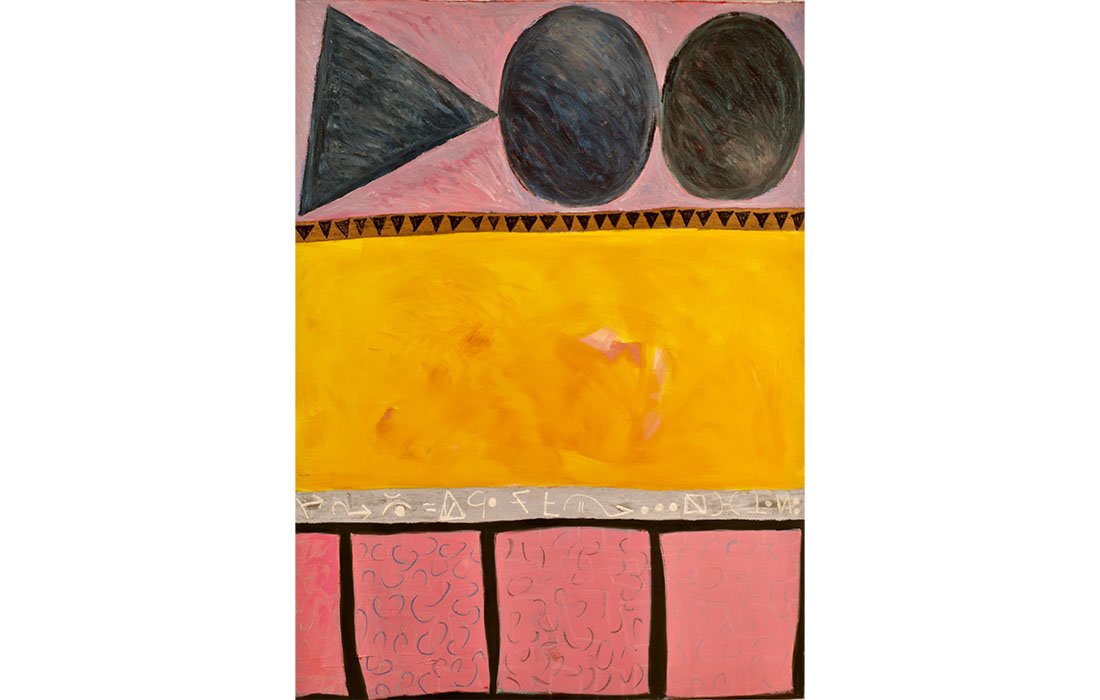
Cynthia Hawkins
Untitled, 1987
Oil on canvas
76 x 56 inches

Cynthia Hawkins
The Currency of Meaning # 2, 1989
Oil on canvas
76.25 x 56 inches
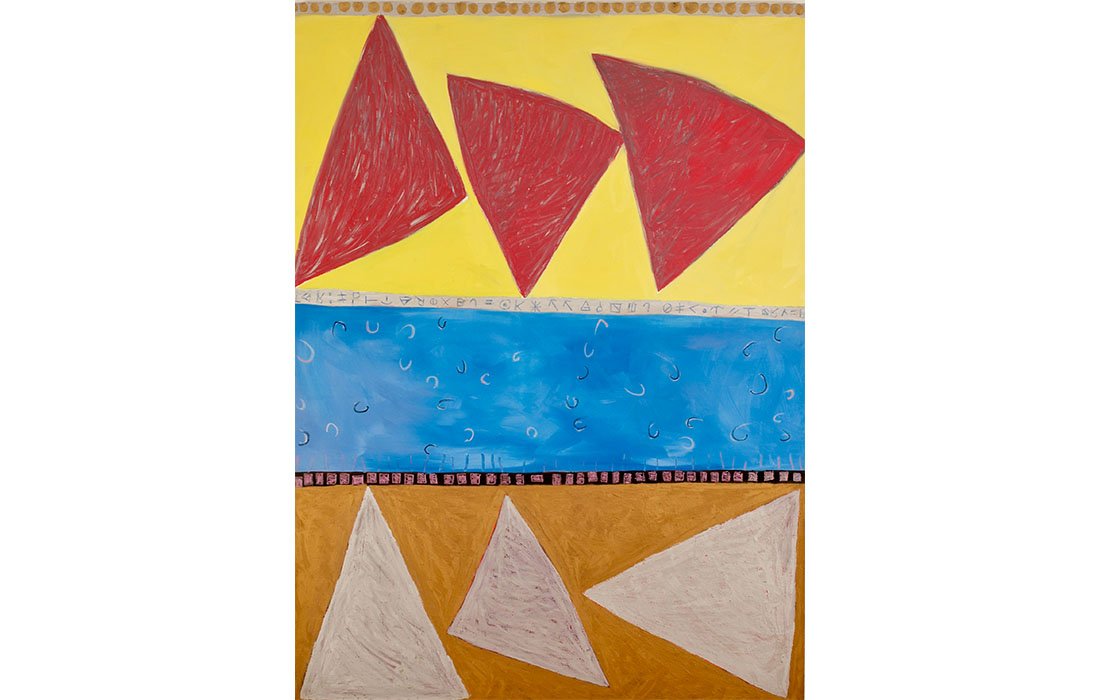
Cynthia Hawkins
The Currency of Meaning # 13, 1989
Oil on canvas
76 x 56 inches

Eldzier Cortor
Jewels / Theme VII, 1985
Color mezzotint (4 / 125)
23.5 x 21.75 inches | Frame:35.25 x 30.25 inches

Eldzier Cortor
Jewels / Theme V, 1985
Mezzotint (T / P 3 State (1 / 3)
20.5 x 13 7/8 inches | Frame: 29.25 x 22.25 inches
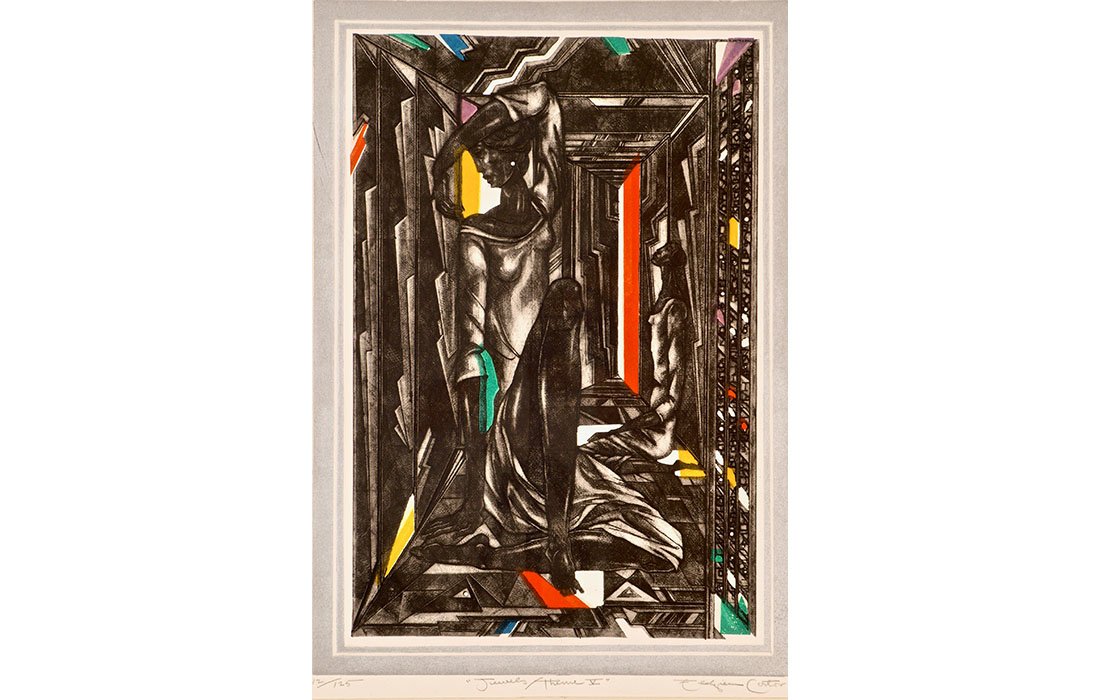
Eldzier Cortor
Jewels / Theme V, 1985
Color mezzotint (12 / 125)
23 x 16.25 inches
Frame: 33 3/8 x 25 3/8 inches
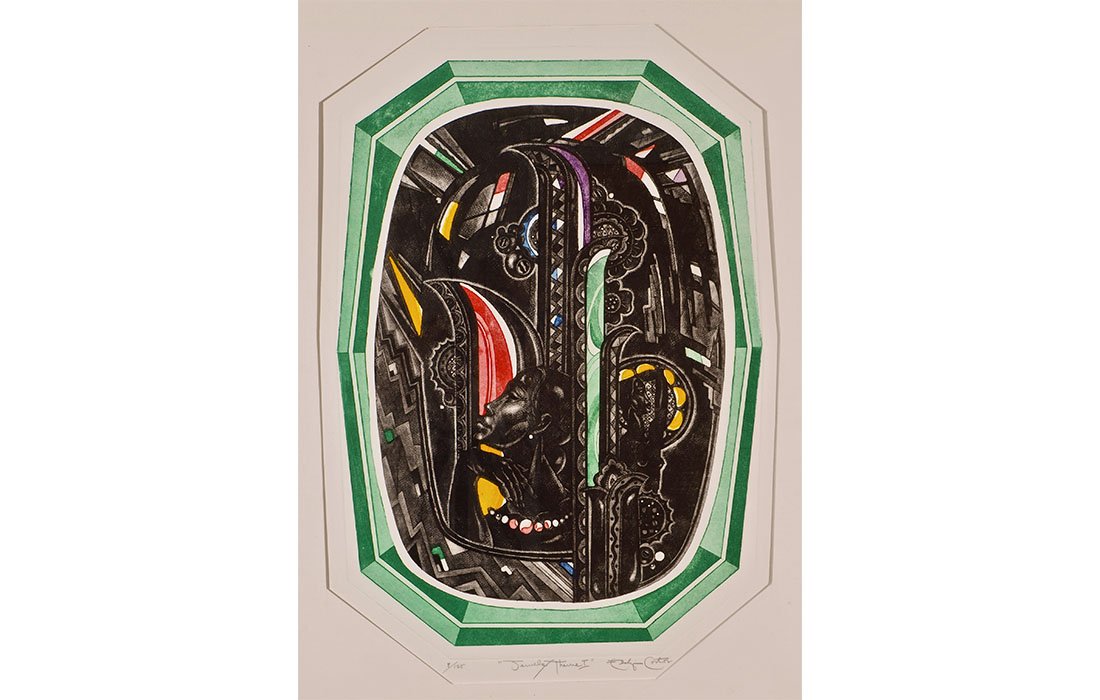
Eldzier Cortor
Jewels / Theme I, 1985
Color mezzotint (8 / 125)
23.25 x 16 inches | Frame: 30.25 x 24.25 inches
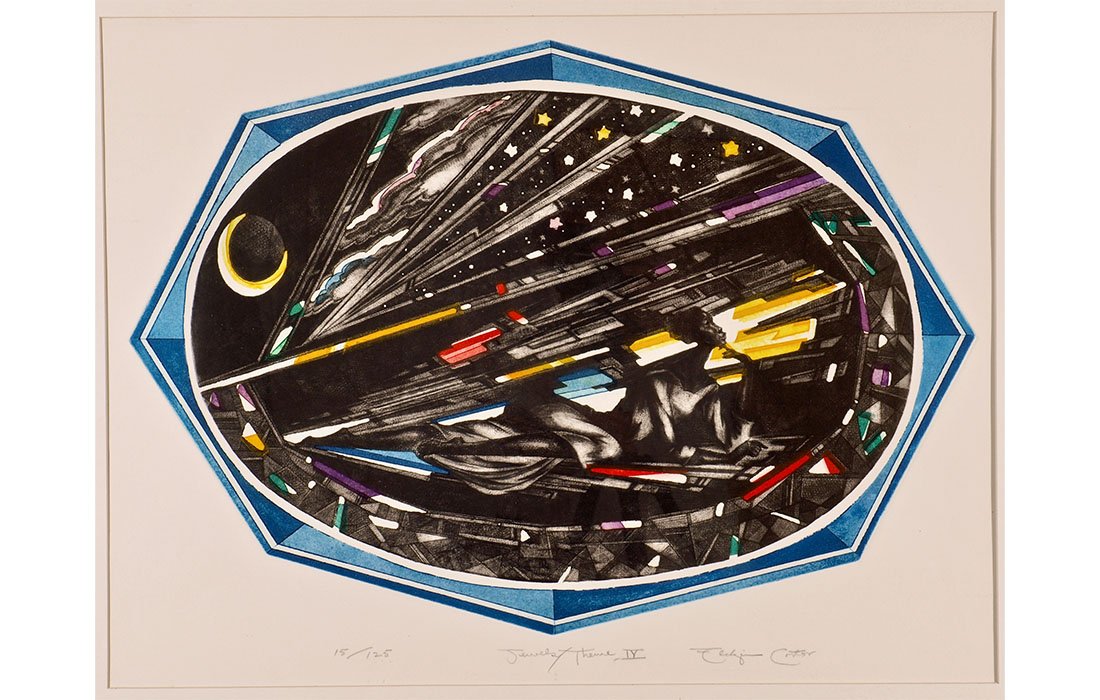
Eldzier Cortor
Jewels / Theme IV, 1985
Color mezzotint (15 / 125)
16.75 x 23.75 inches | Frame: 24.25 x 30.25 inches

Eldzier Cortor
Composition / Jewels, 1985
Etching (2 / 12)
20.25 x 18 3/8 inches | Frame: 28 3/8 x 26.25 inches
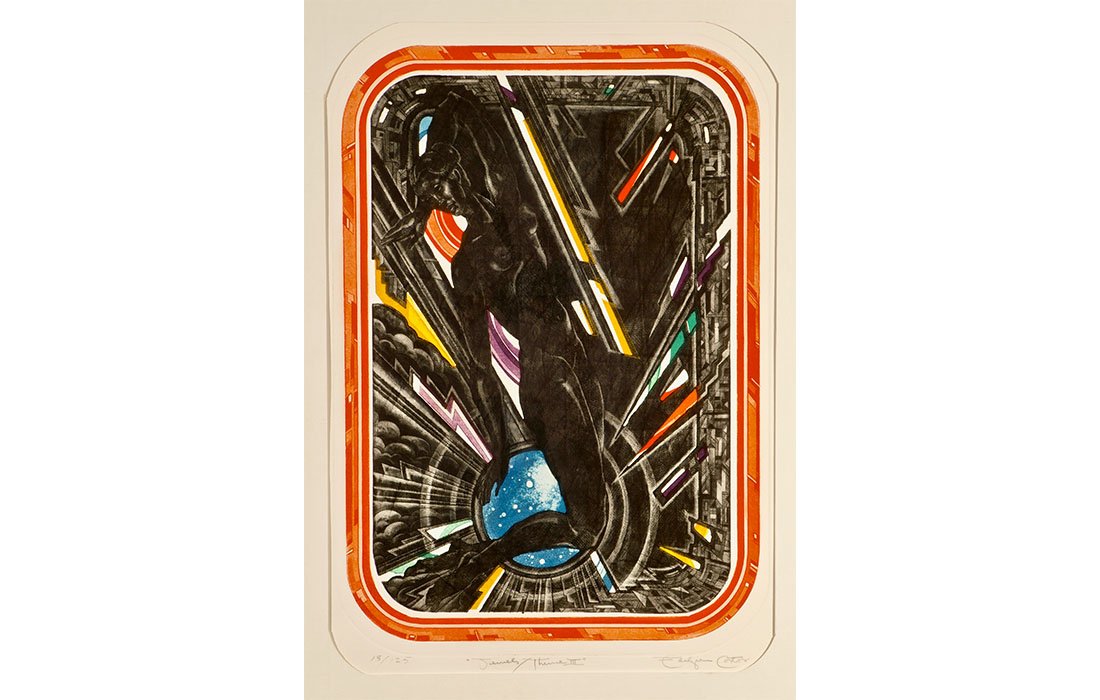
Eldzier Cortor
Jewels / Theme III, 1985
Color mezzotint (13 / 125)
23.75 x 16.75 inches | Frame: 30.25 x 2.25 inches
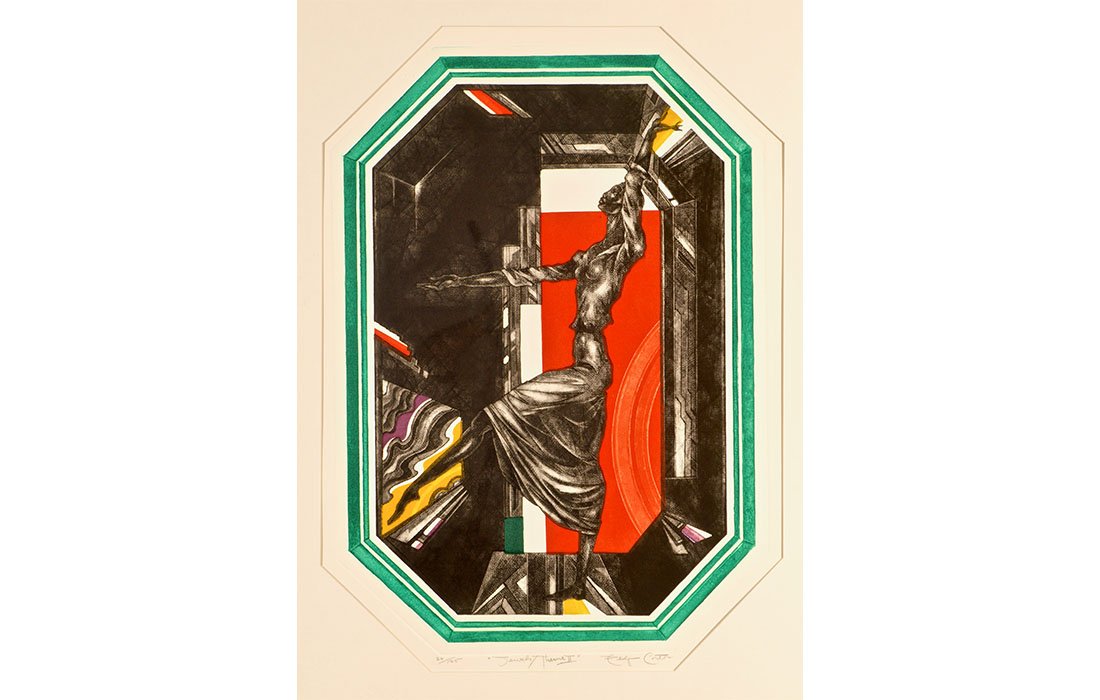
Eldzier Cortor
Jewels / Theme II, 1985
Color mezzotint (26 / 125)
23.75 x 17 inches | Frame: 31.25 x 23.25 inches
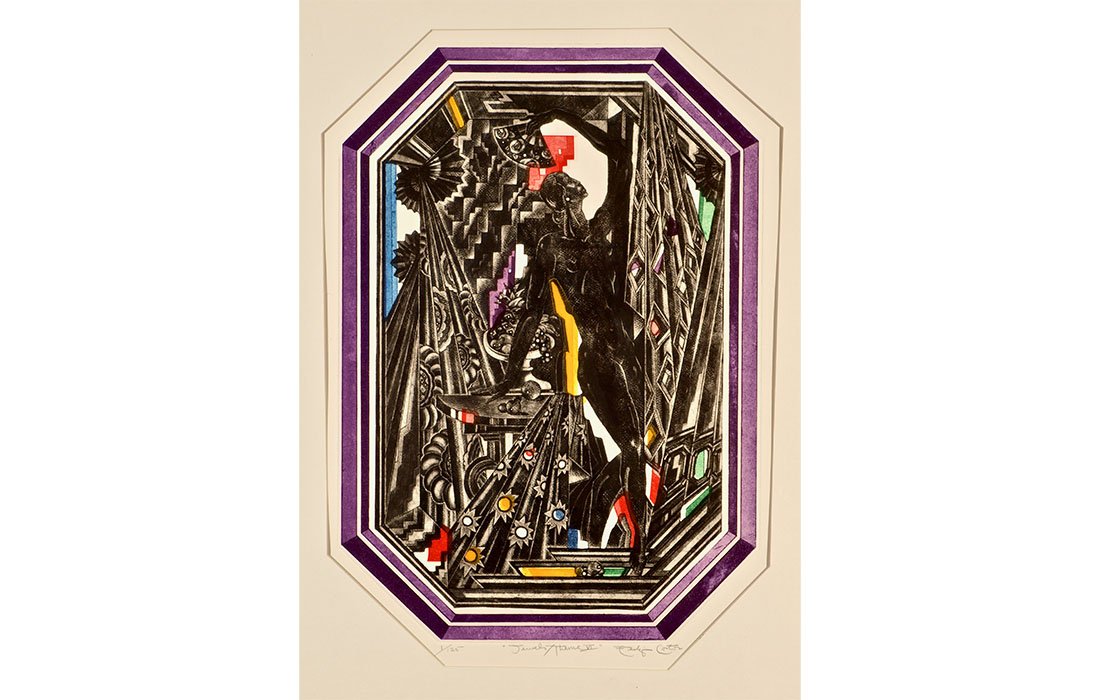
Eldzier Cortor
Jewels / Theme VI, 1985
Color mezzotint (1 / 125)
23.75 x 16.75 inches | Frame: 31.25 x 24.25 inches
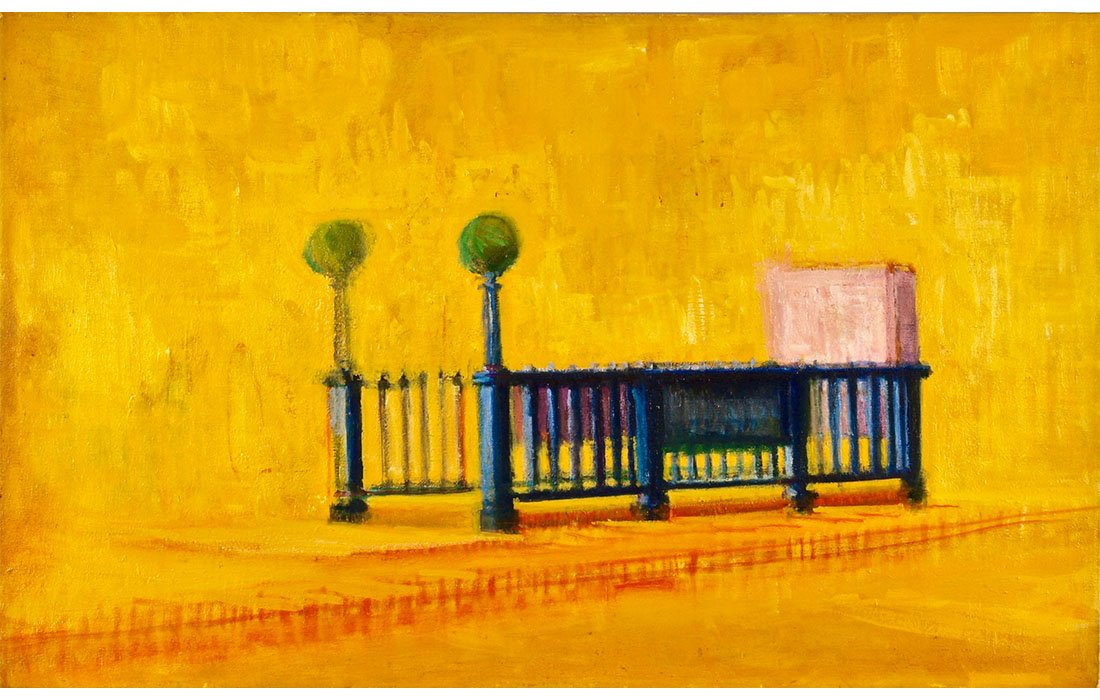
Arthur Coppedge
Untitled (First Avenue Station)
ca. 1986. Oil on canvas
22 1/8 x 36 inches
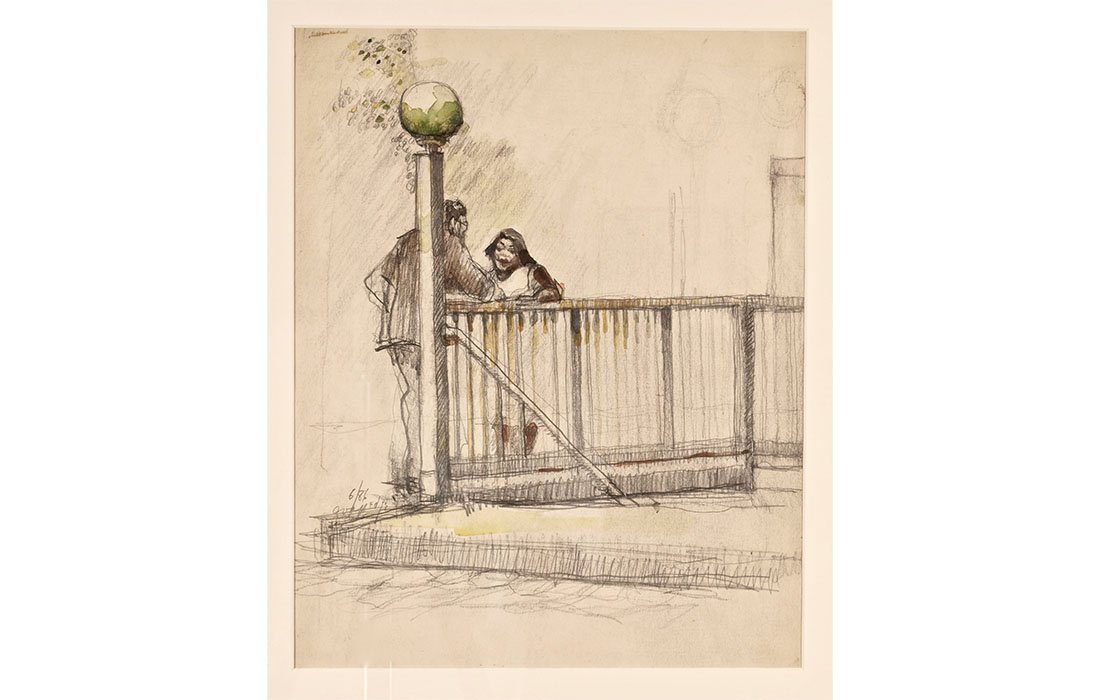
Arthur Coppedge
Sweet Talk, 6/1986
Graphite Drawing with color
12.25 x 10 inches | Frame: 19 x 16 inches
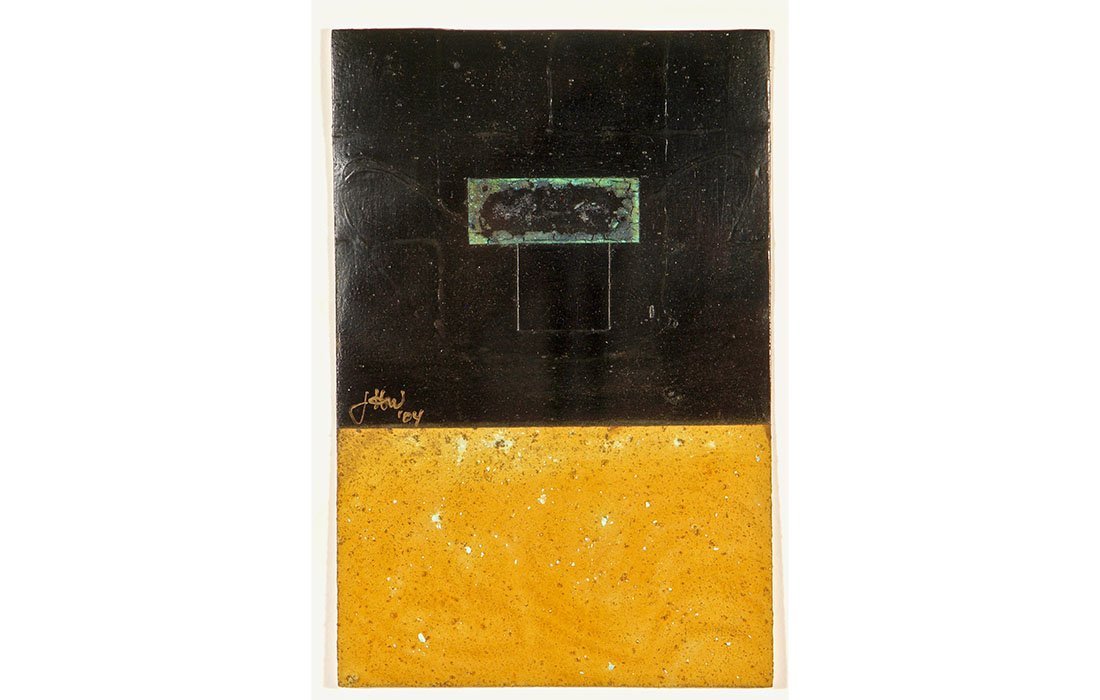
Jack H. White
Dark Matters and Entropy # 40, 2004
Mixed Media, embossed mastic plaster
6 x 4 inches | Frame: 15.25 x 12.25 inches
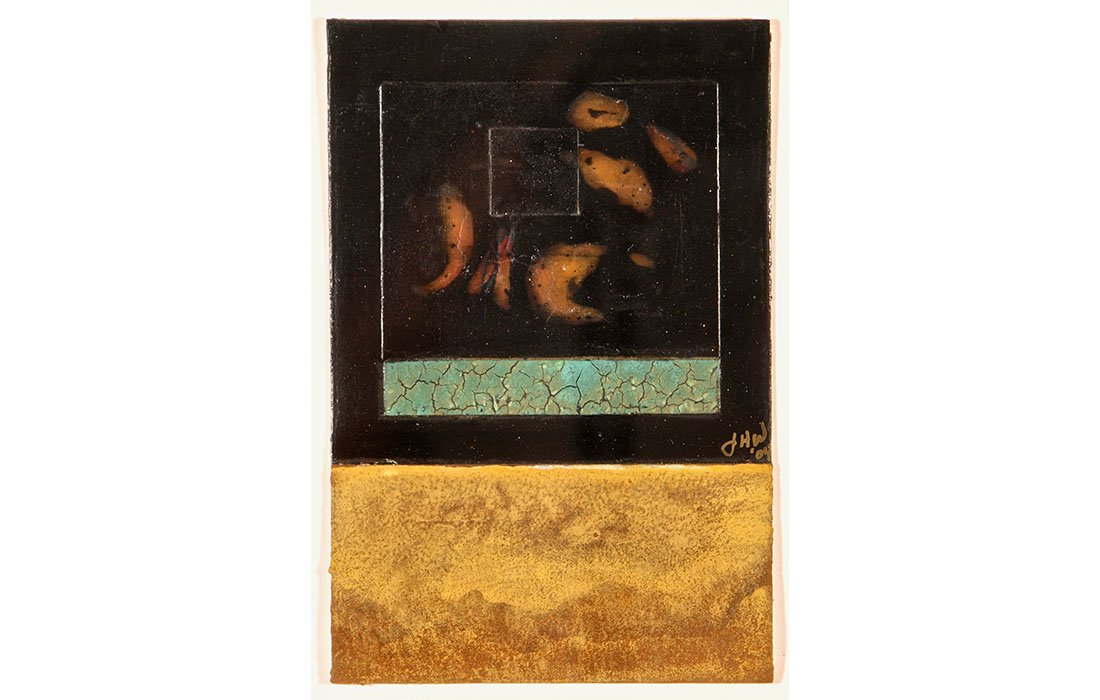
Jack H. White
Dark Matters and Entropy # 32, 2004
Mixed Media, embossed mastic plaster
6 x 4 inches | Frame: 15.25 x 12.25 inches
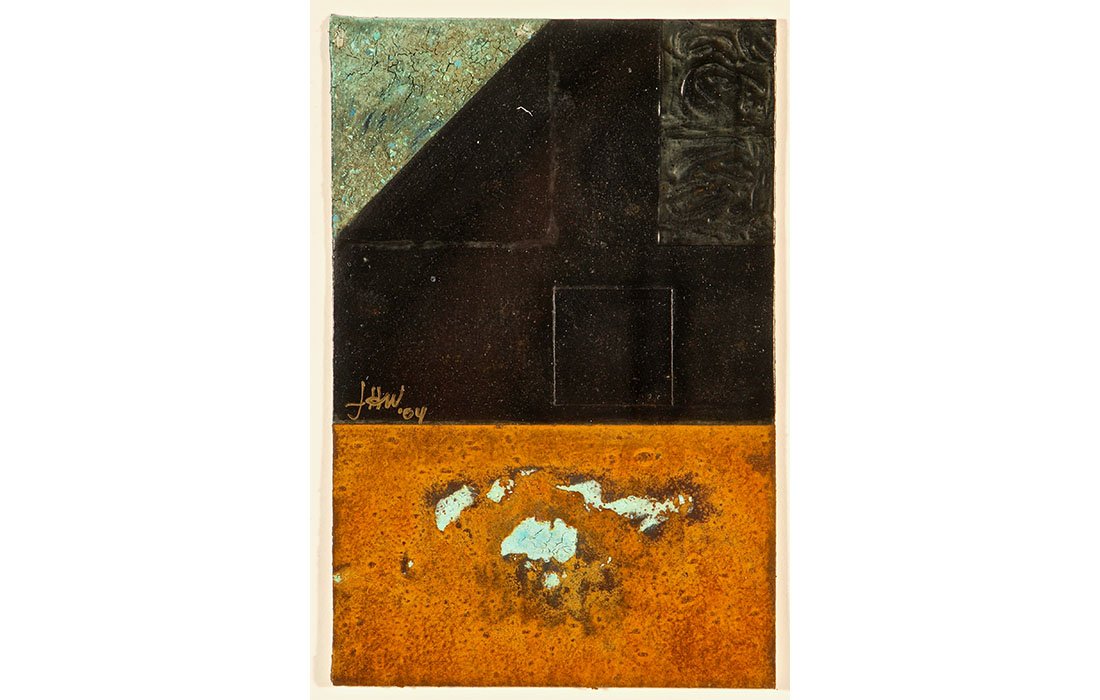
Jack H. White
Dark Matters and Entropy # 39, 2004
Mixed Media, embossed mastic plaster
6 x 4 inches | Frame: 15.25 x 12.25 inches
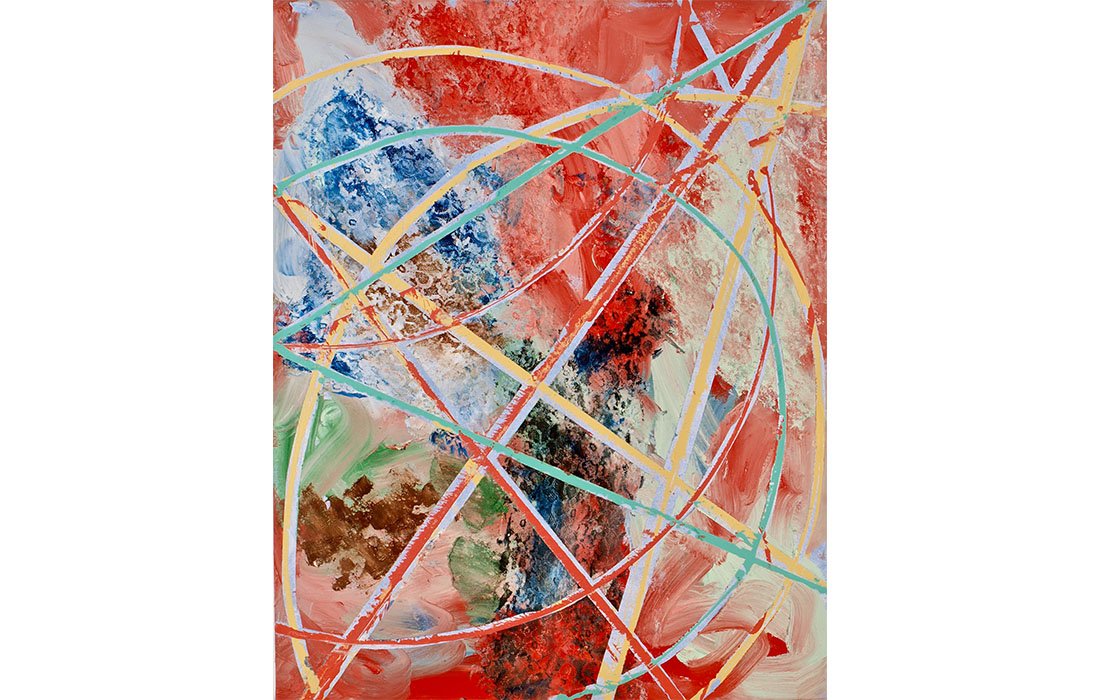
Joe Overstreet
Morning / East Light, 2014
Oil and encaustic on canvas
48 1/8 x 38 1/8 inches
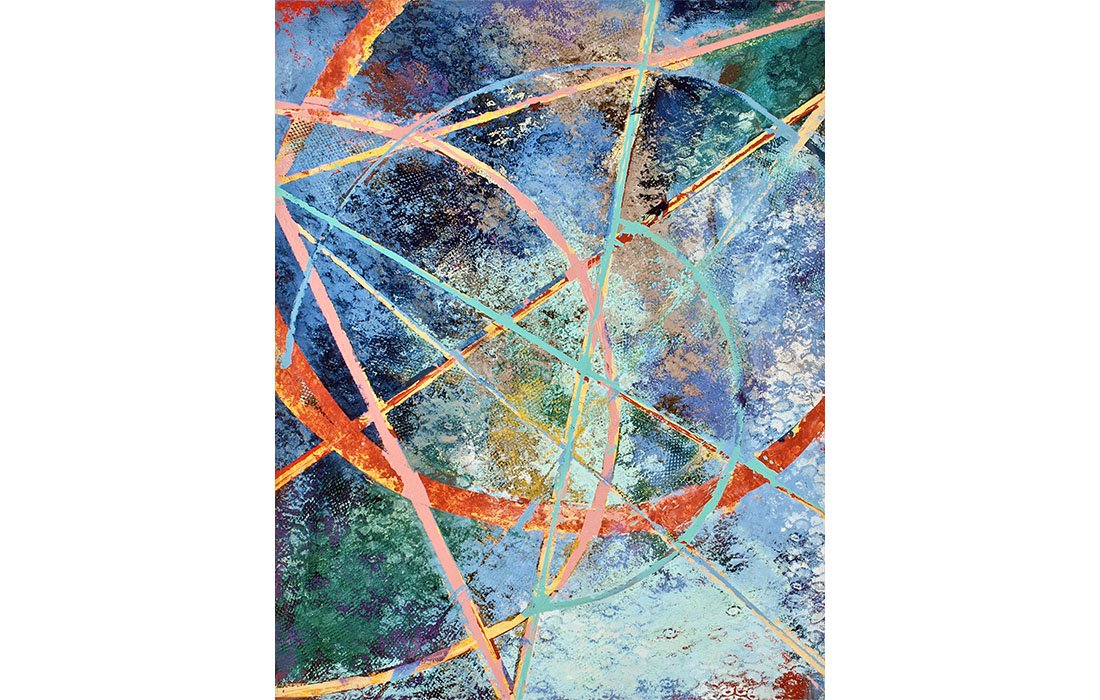
Joe Overstreet
Late Day / East Light, 2014
Oil and encaustic on canvas
48 1/8 x 38 1/8 inches
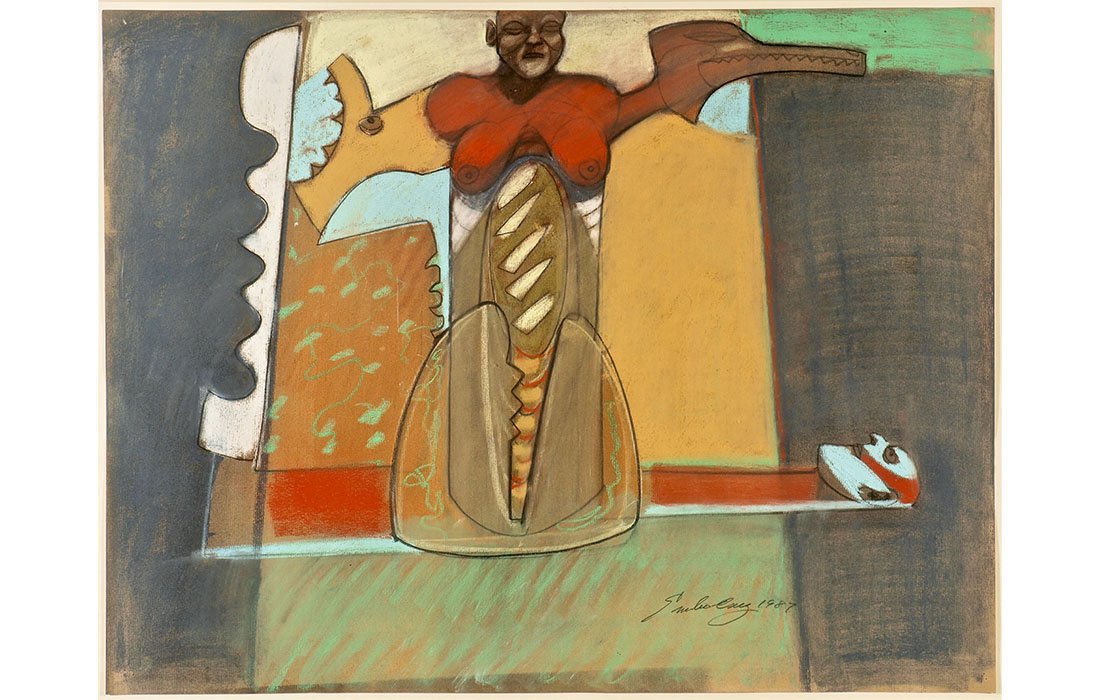
Emilio Cruz
Striated Voodoo, 1987
Pastel on paper
19.5 x 25.25 inches | Frame: 25 1/8 x 30 7/8 inches
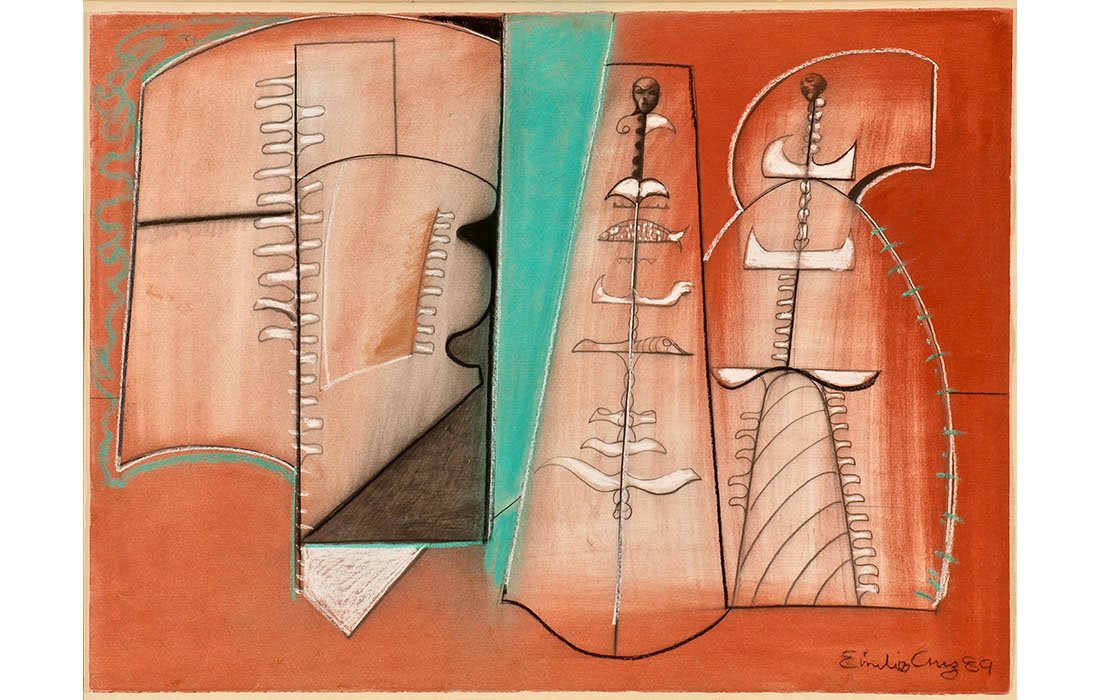
Emilio Cruz
Untitled, 1989
Pastel on paper
22.25 x 29 7/8 inches | Frame: 30 x 38 inches
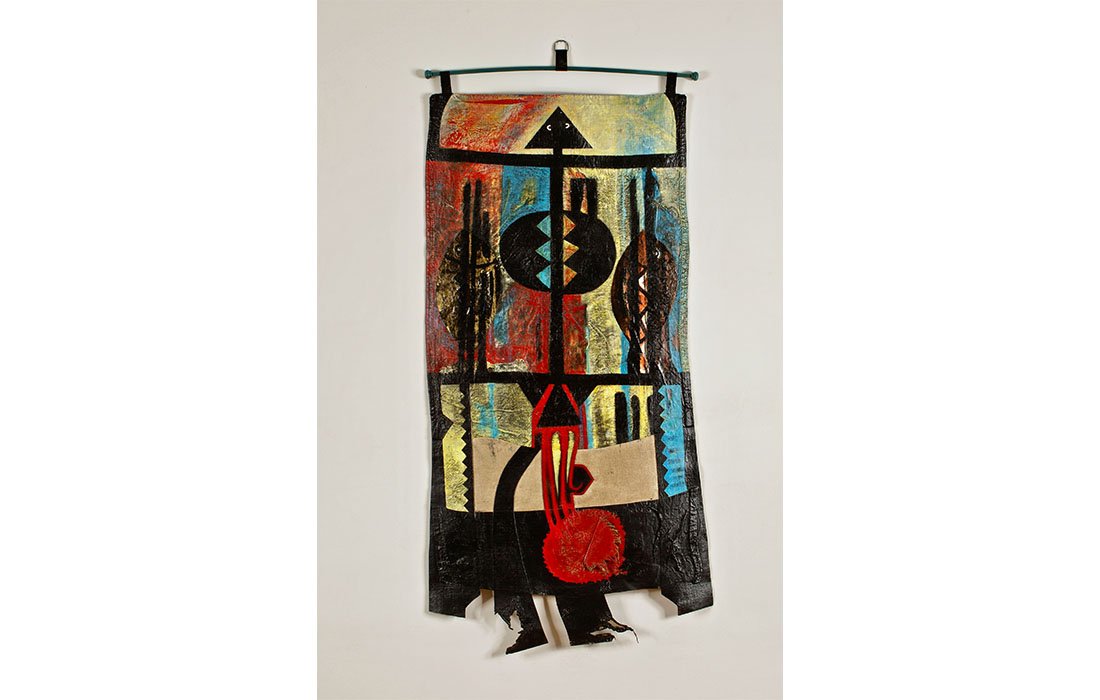
Saliou Diouf
Le Sida Tue, 1995
Oil on leather Tapisserie
62 x 30 inches
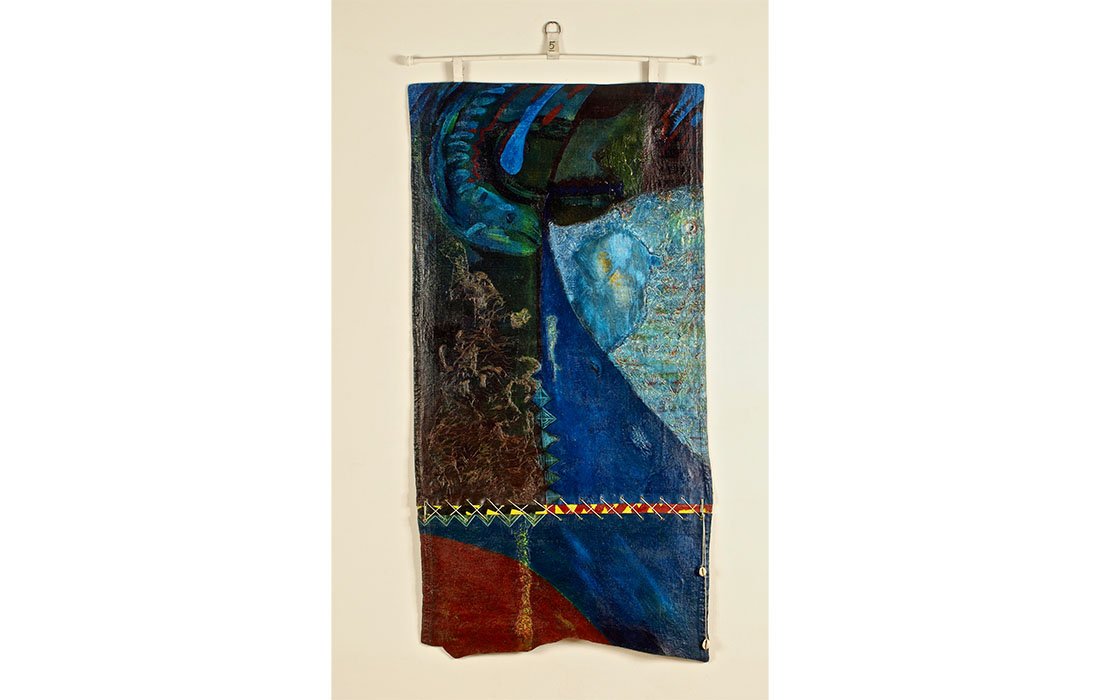
Saliou Diouf
Le Grand Bleu, 1995
Oil on leather Tapisserie
60 x 28 inches
Image Photography : Christian Carone
Press Release
STRUCTURES: SERIES AND PAIRS
From August 3 to September 3, 2022, the Wilmer Jennings Gallery at Kenkeleba is pleased to present the exhibition STRUCTURES: SERIES AND PAIRS. The exhibition consists of paintings, drawings and prints from the Kenkeleba Collection. Images of individual works and photographs of the Gallery will be viewable on line. The 16 artists are: Frank Bowling, Vivian Browne, Arthur Coppedge, Eldzier Cortor, Emilio Cruz, Saliou Diouf, Aaron Douglas, Cynthia Hawkins, Richard Hunt, Gerald Jackson, Charlotte Ka, Tom Kendall, Richard Mayhew, Joe Overstreet, Jack H. White, and Hale Woodruff.
The exhibit considers methods used by artists to evelop and extend their art practice. For example, Cynthia Hawkins has said: The use of series is a way in which I can perpetually move my work forward. While I do not consider each body of work as a series, a group of my drawings from 1972-1974 formed the mark-making strategy I use today. They led to a series of pastel drawings on paper, to large scale paintings on paper and then to large canvases. Early in my art practice I sought structure that I found in forms in nature and elsewhere, and even in particular words or phrases. These “structures” alluded to meanings, some vague and ambiguous, that could be embedded in my work. An important aspect of my practice is that one body of work informs the next.
Artists generally resolve concerns and questions with inventiveness. Arthur Coppedge’s commanding oil canvas of an isolated First Avenue Subway station is preceded by a drawing of the station with figures that he eliminated from the canvas. Artists explore materials. After Tom Kendall worked with heavy construction materials, he used torn sandpaper and emery board to develop powerful abstract collages. Jack White defined delicate subtlety in joint compound on board, artfully embossed and colored. Saliou Diouf prepared leather rather than canvas to hold his images. Eldzier Cortor explored the reflected light of faceted gem stones, combining their brilliance with dance figures.
Series are especially effective as narratives. Aaron Douglas captured the aura of Emperor Jones, from the storied 1920s play by Eugene O’Neill in 4 stark black and white prints. Vivian Browne revisited her journey to Nigeria—in 3 separate canvases using dream-like pastel colors and related forms. Emilio Cruz created dramatic reenactments in muted color. Richard Mayhew studied the land in similar locations, but made shockingly different color comparisons. Richard Hunt reveals his sculpture in colorful, forested environments. Joe Overstreet’s surfaces record the light in a view of the sky from the inside out.Gerald Jackson’s diptych structure separates his color system that is infused with the power to heal people and the environment. On another track, Charlotte Ka used the diptych form to visualize the reverberating sound of the drumbeat in color and rhythm. From the other side of time, Hale Woodruff and Frank Bowling are presented in pairs, in works made years apart. Bowling’s 1996 composition adds line and removes physical structures. Woodruff organizes and redefines his shapes in a new perspective.
Kenkeleba programs are funded, in part, by the New York City Department of Cultural Affairs in partnership with the City Council, and many generous friends.


